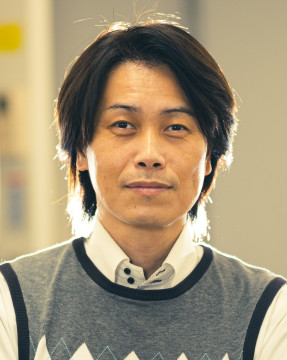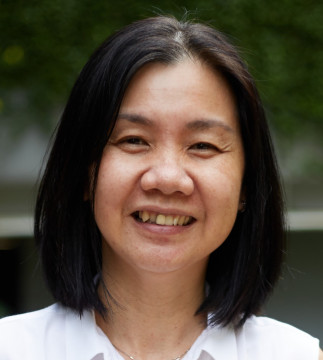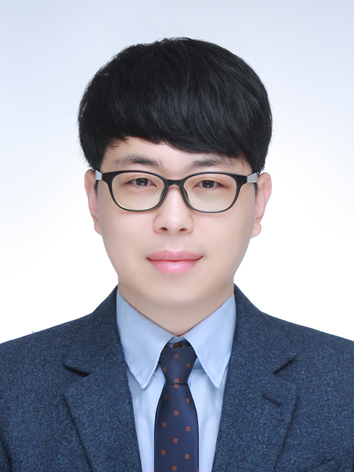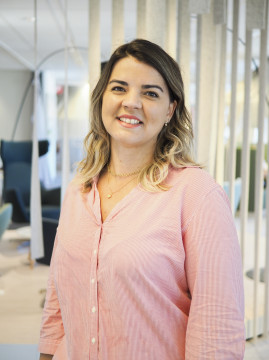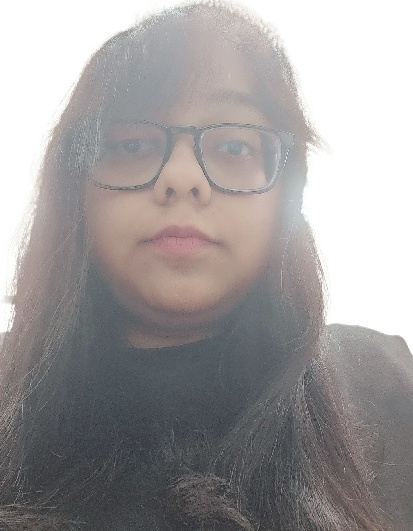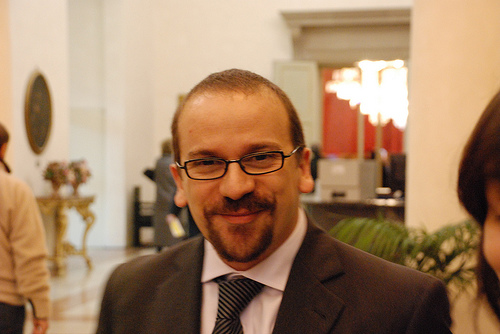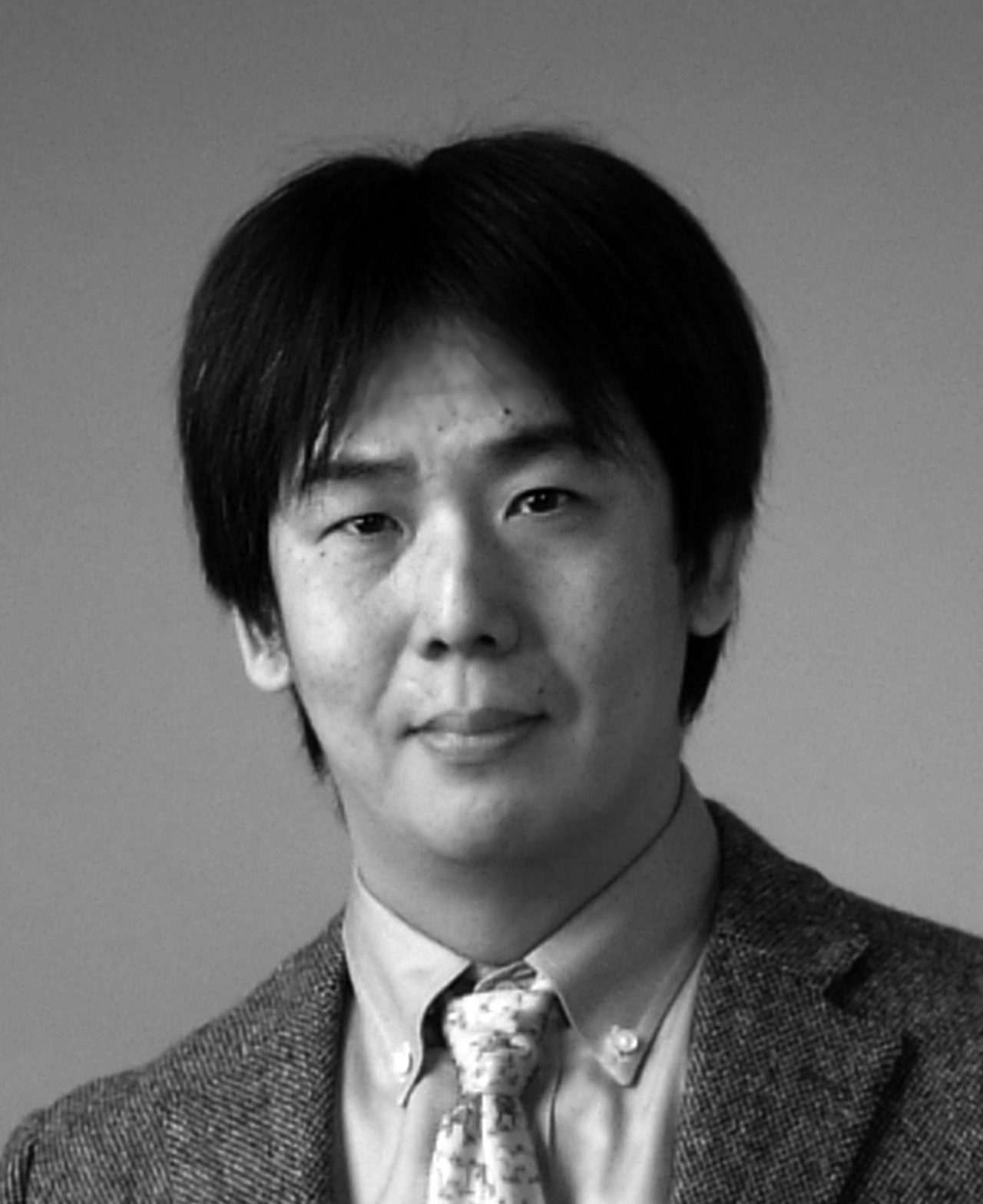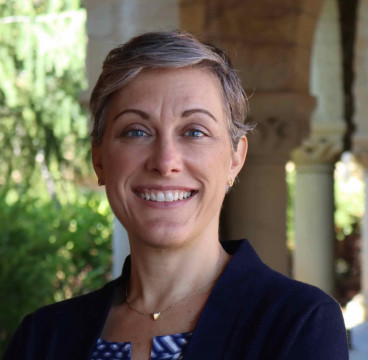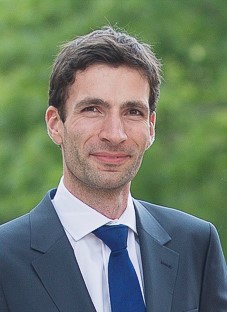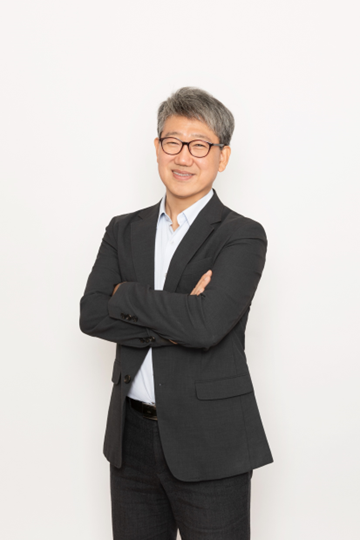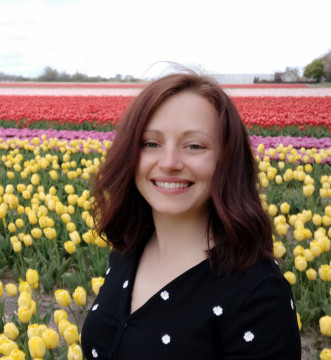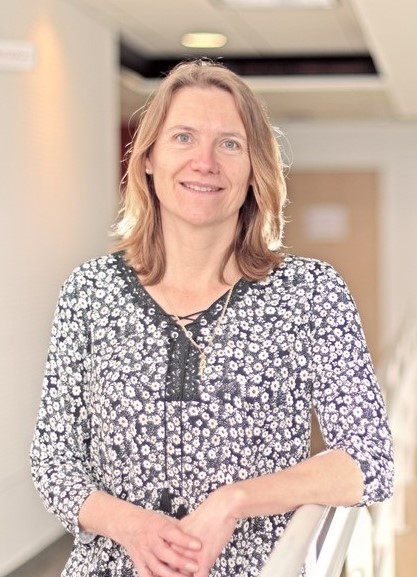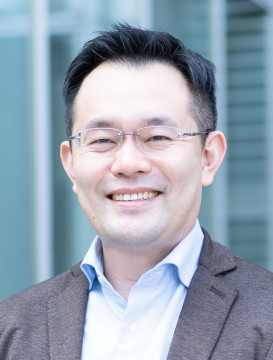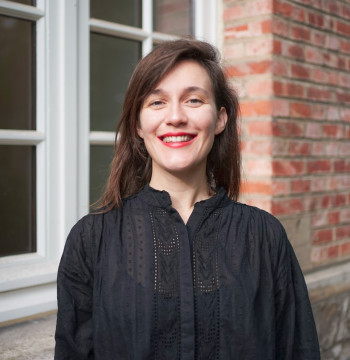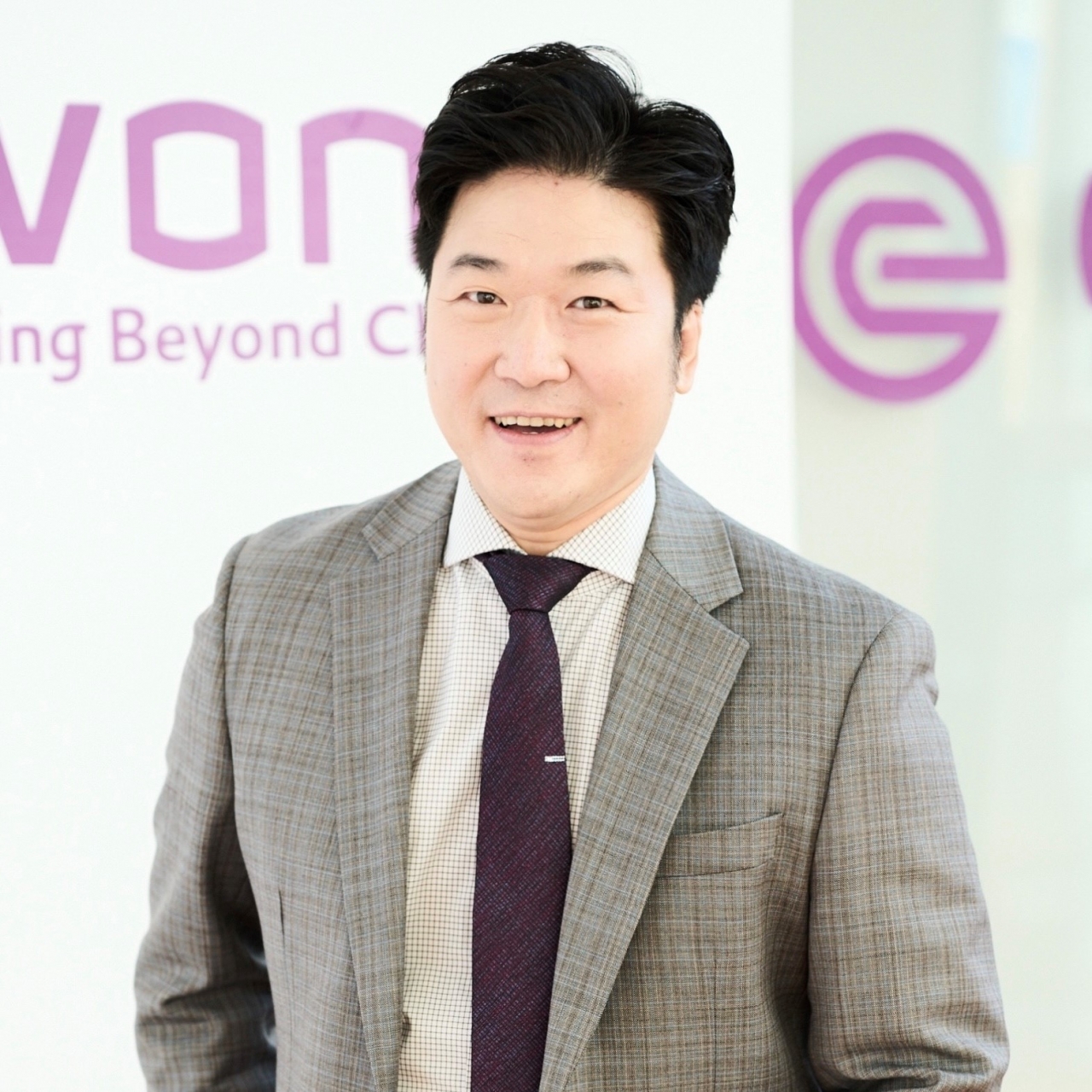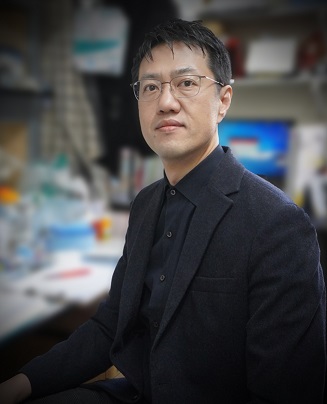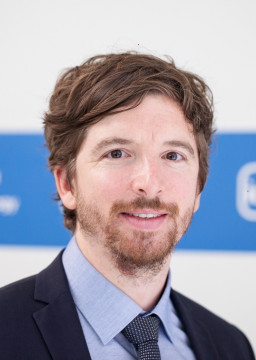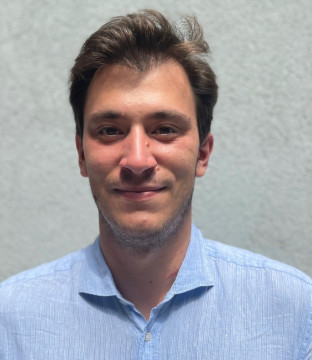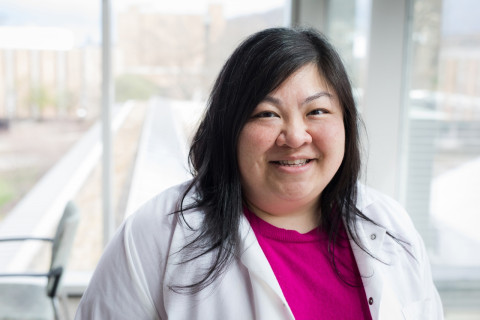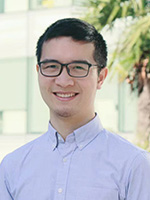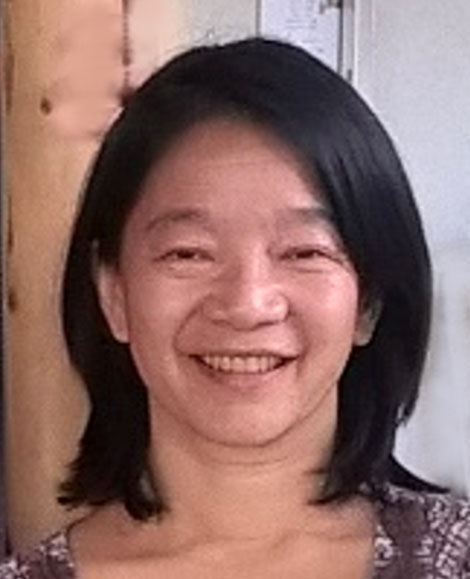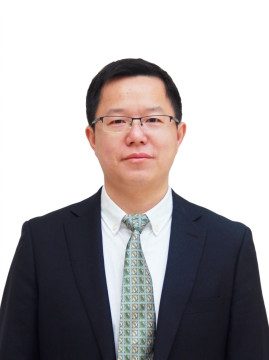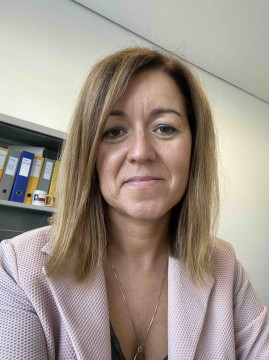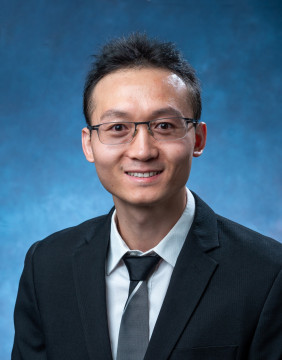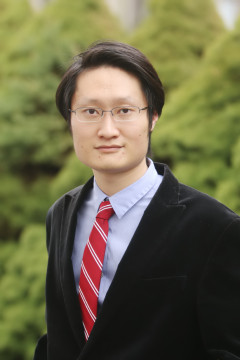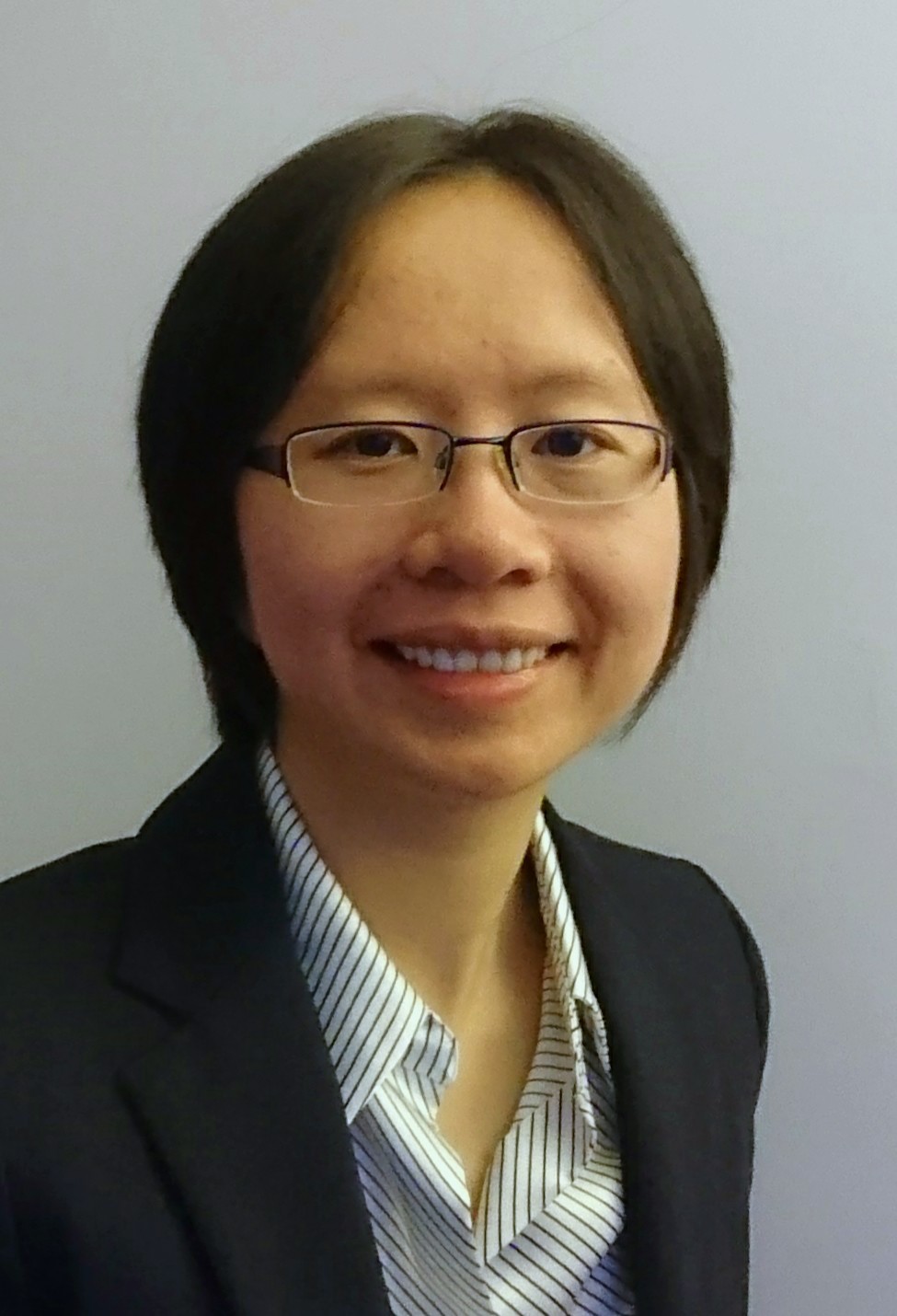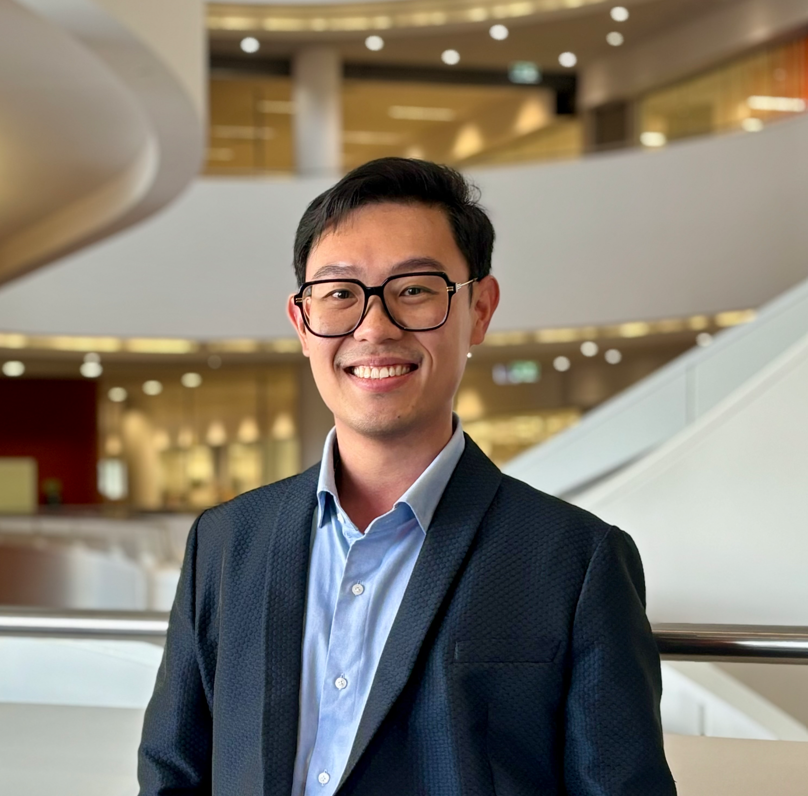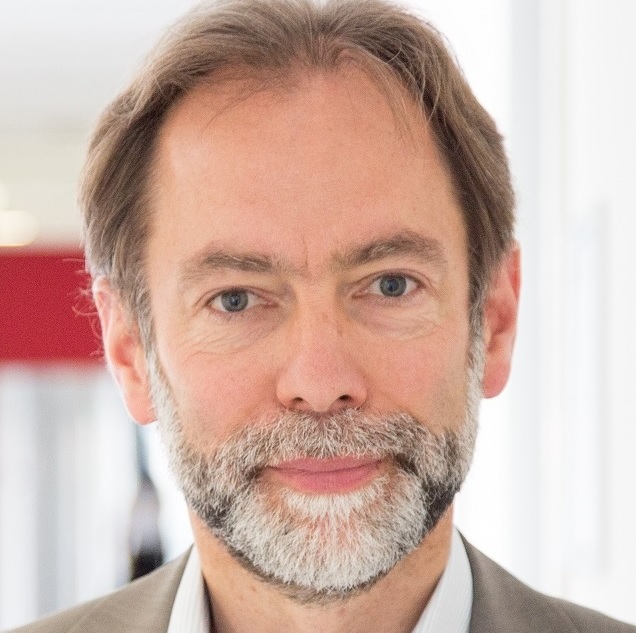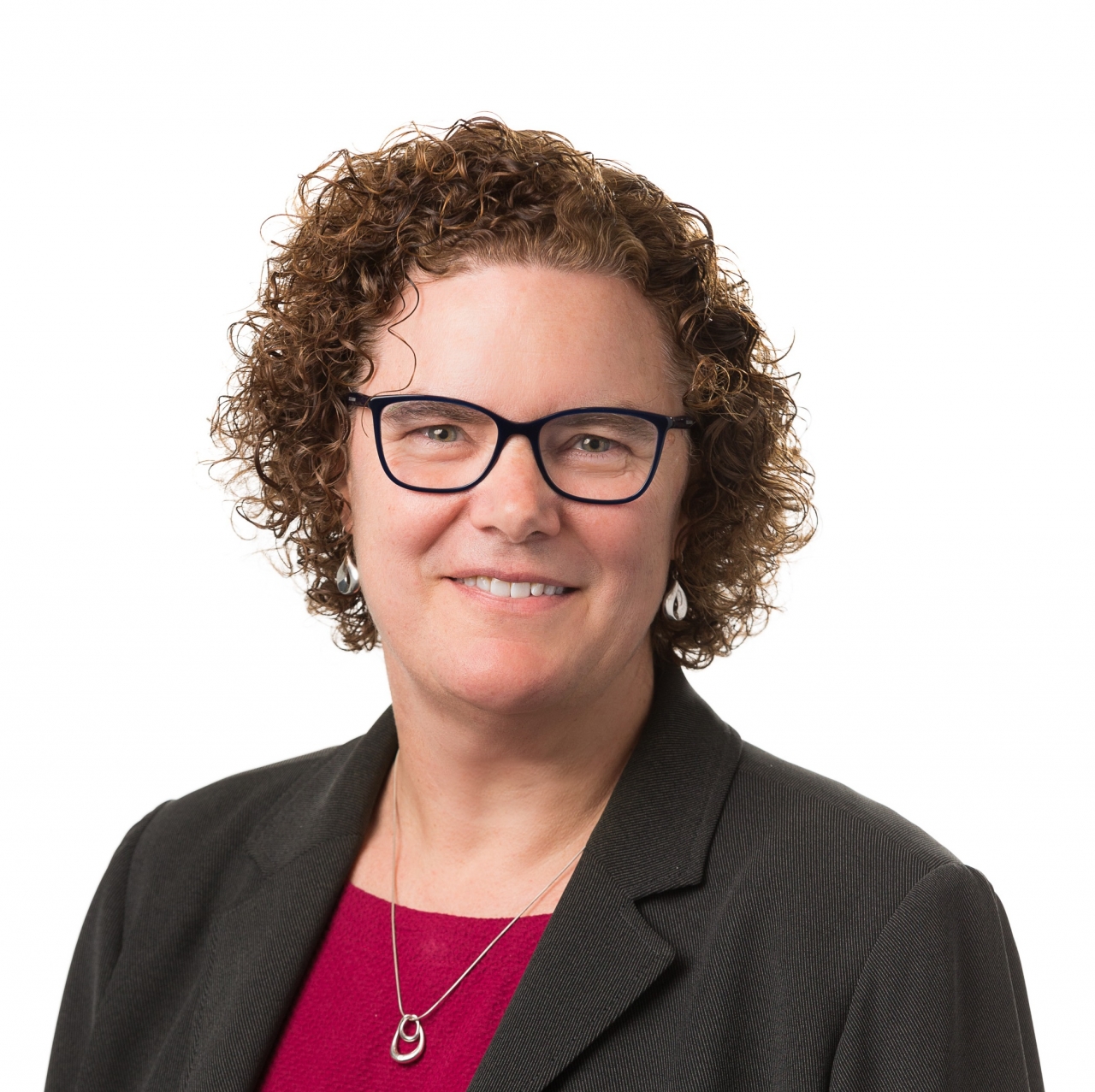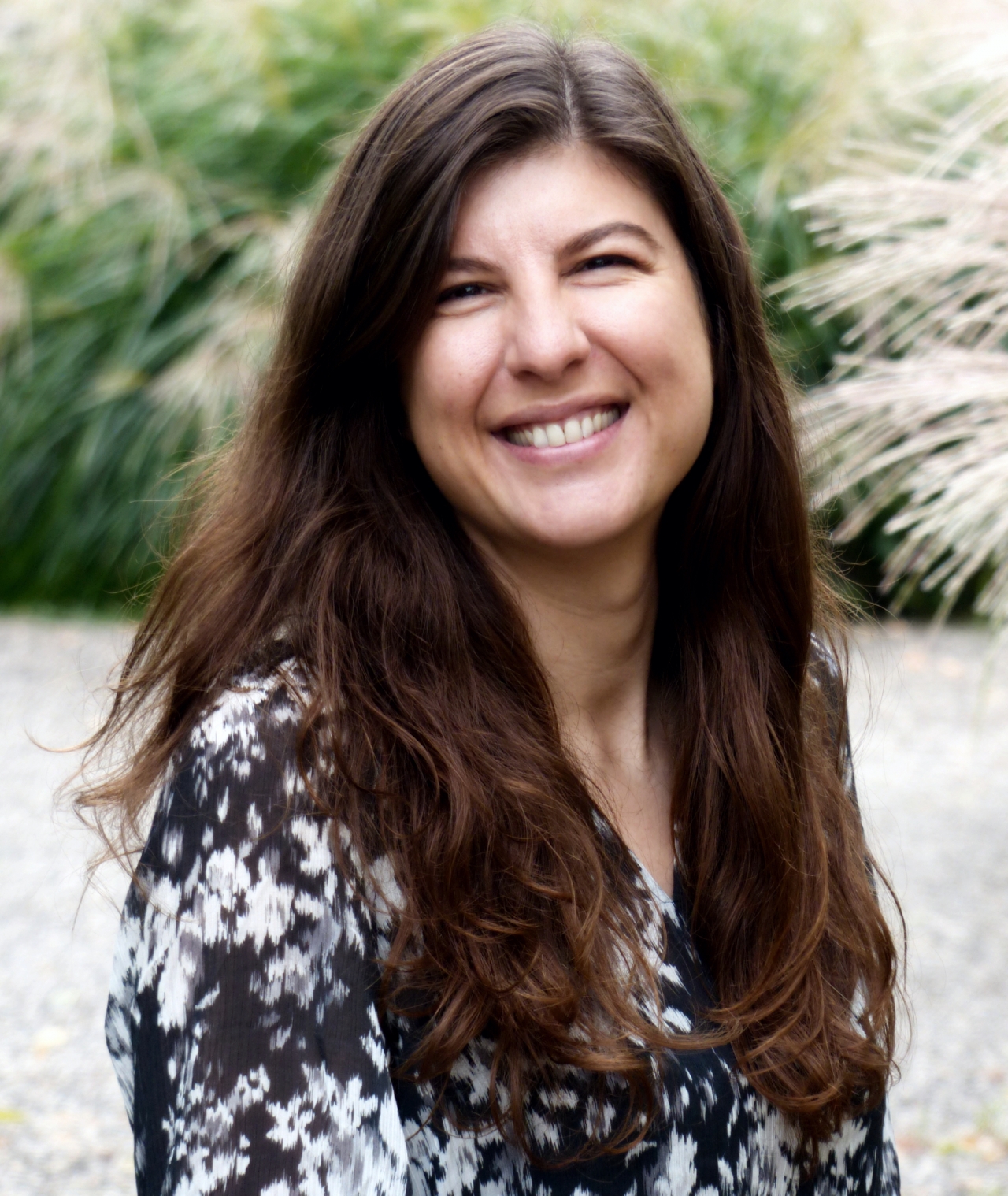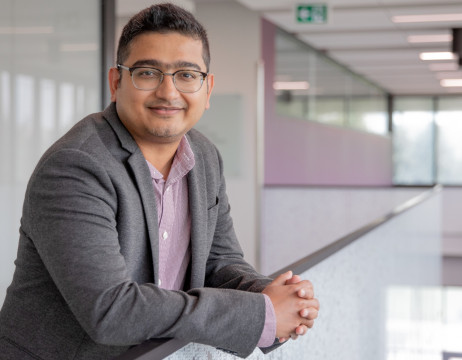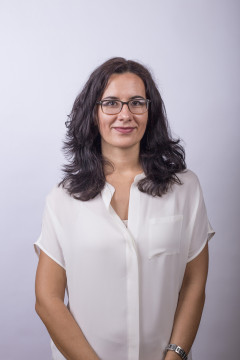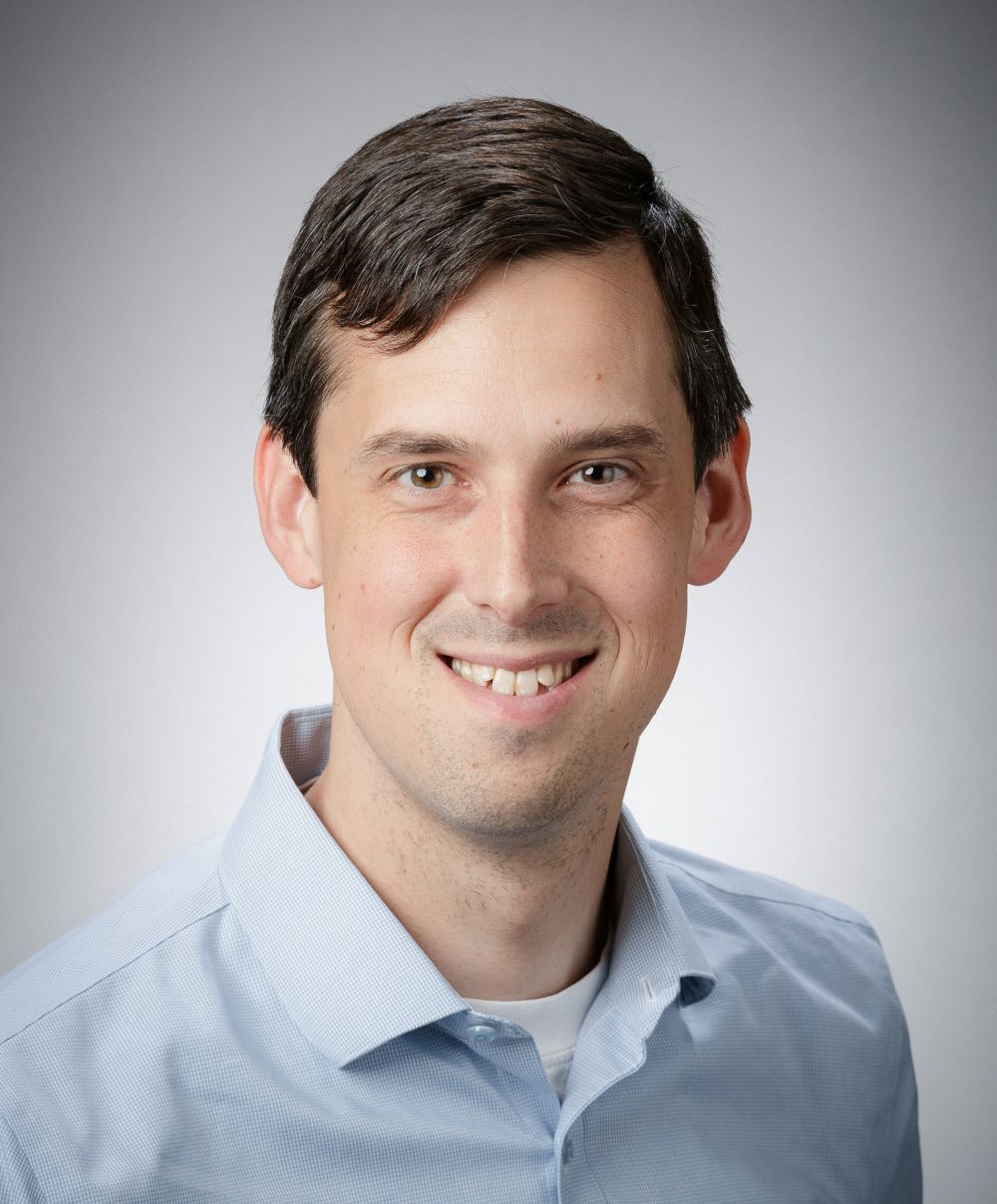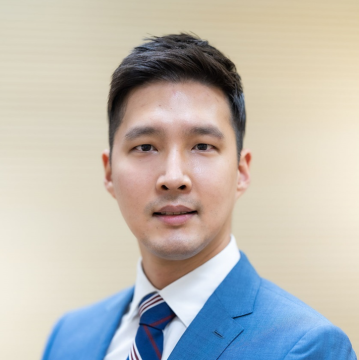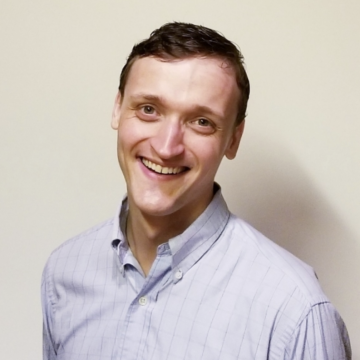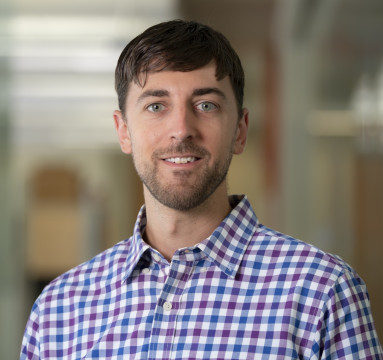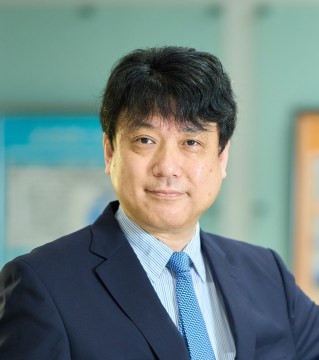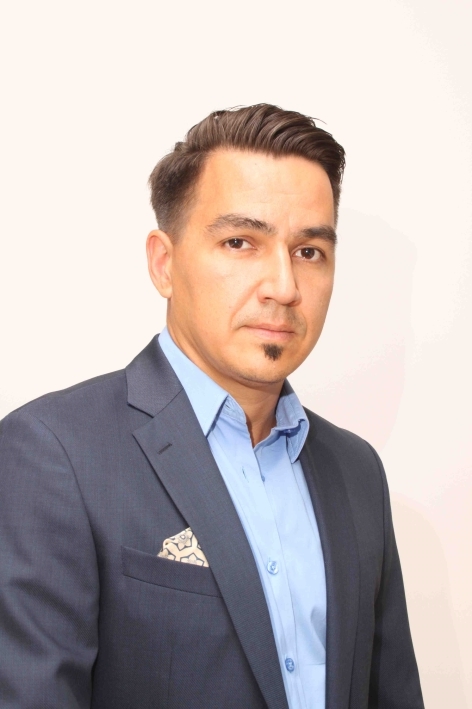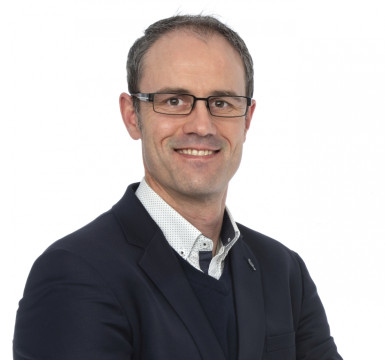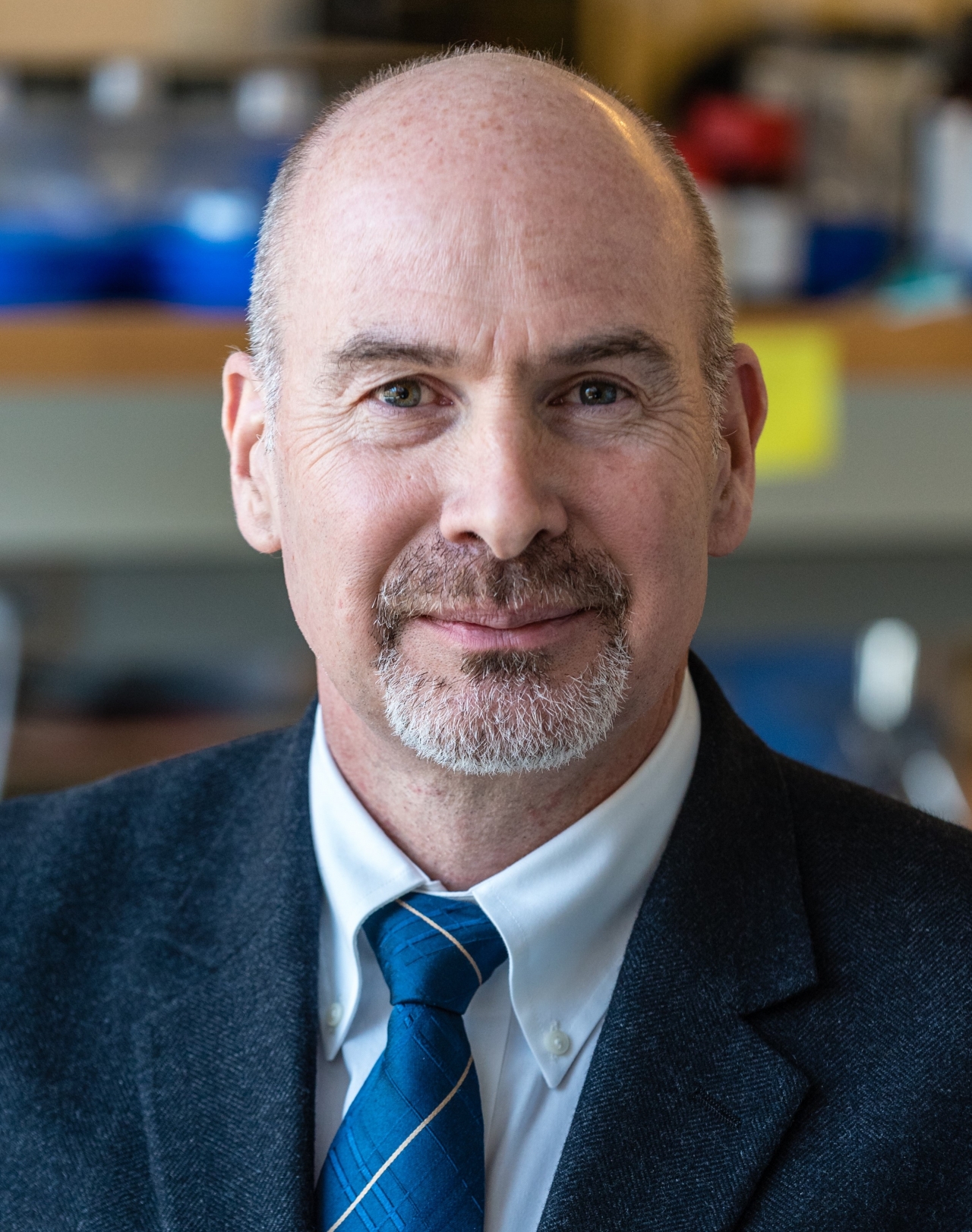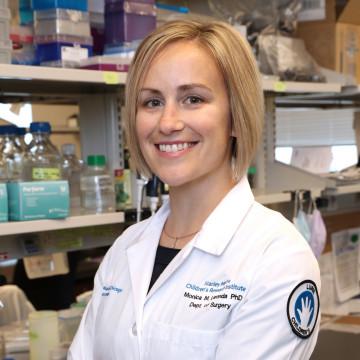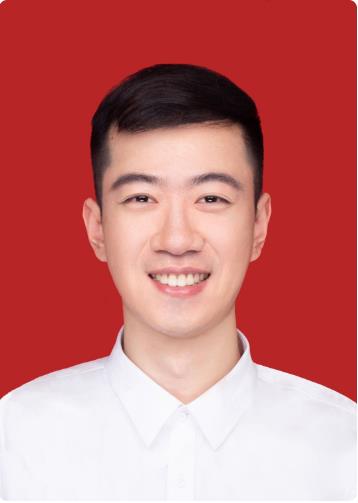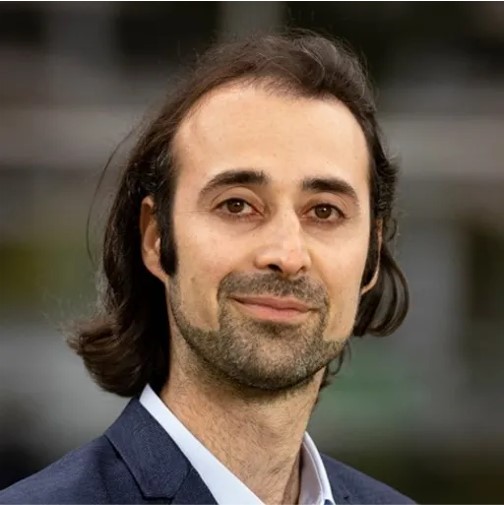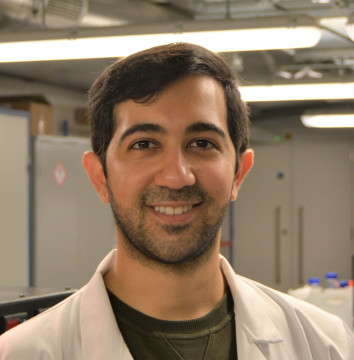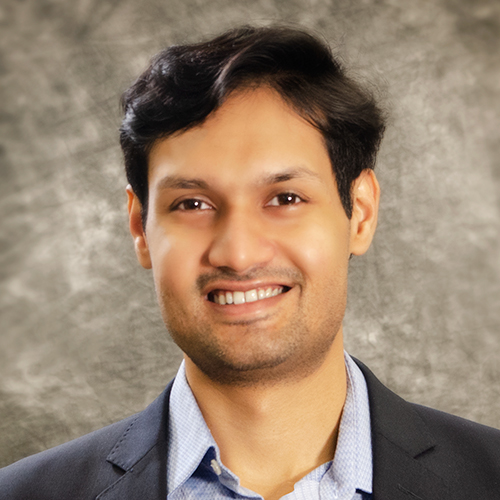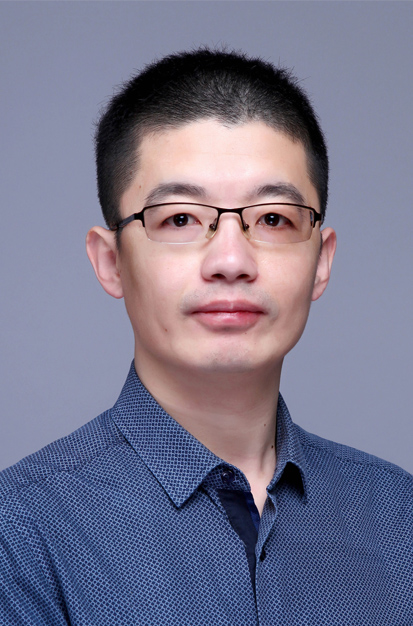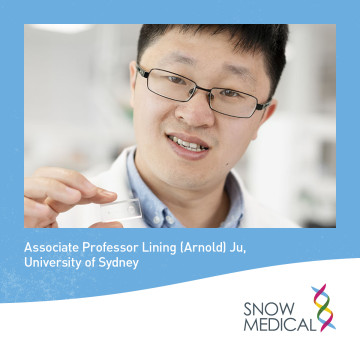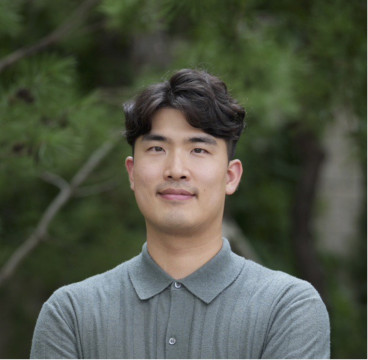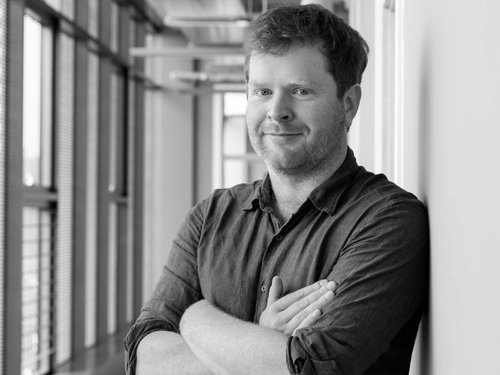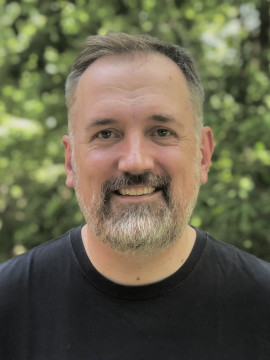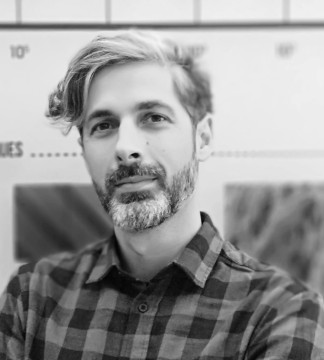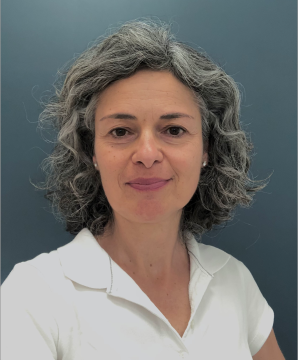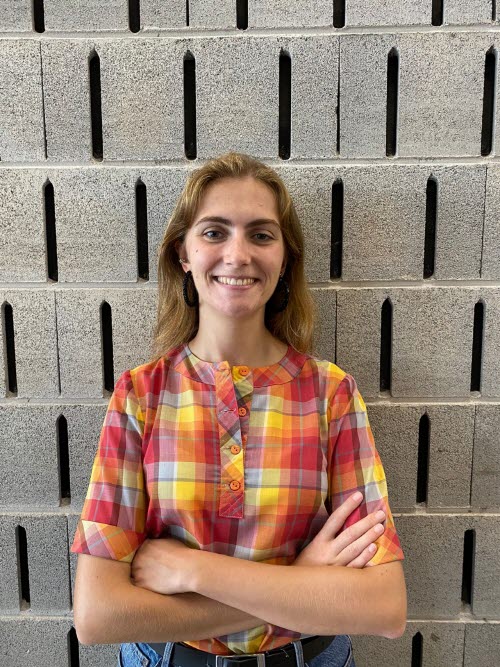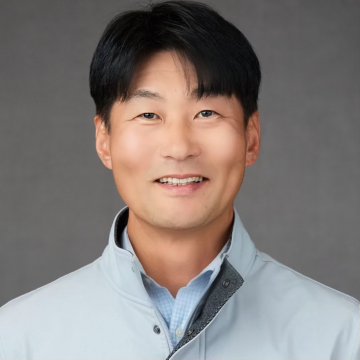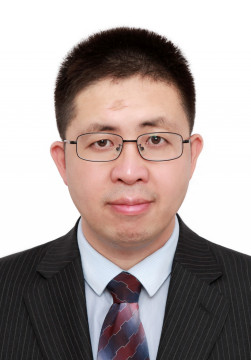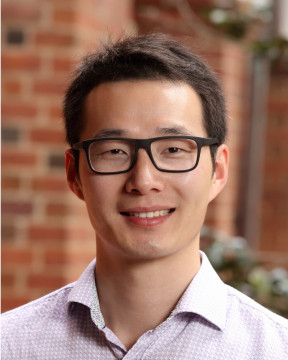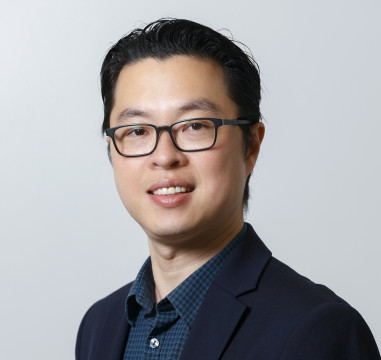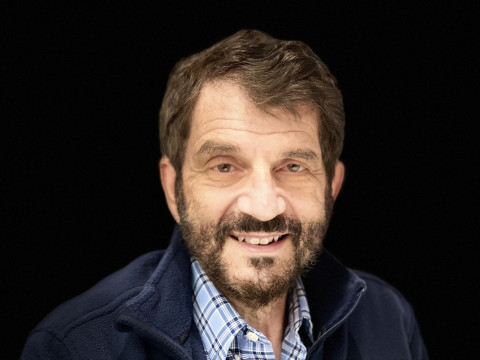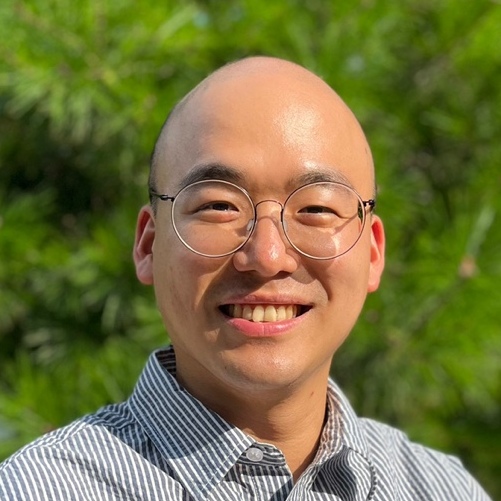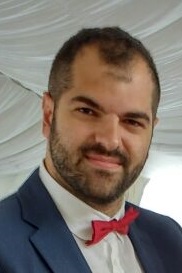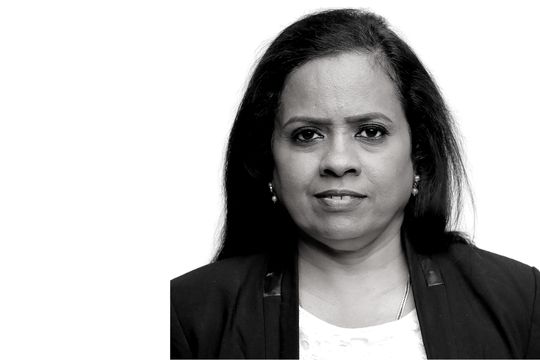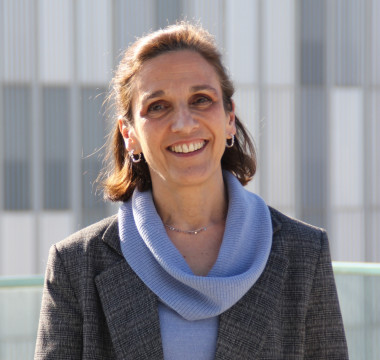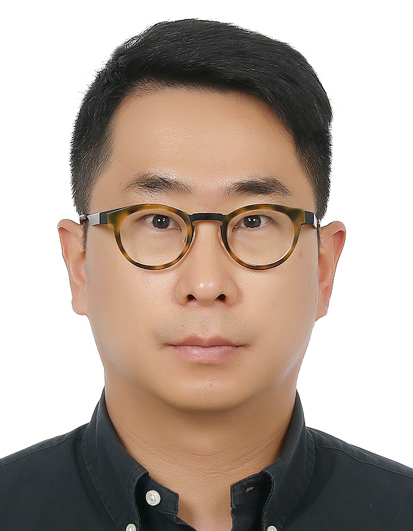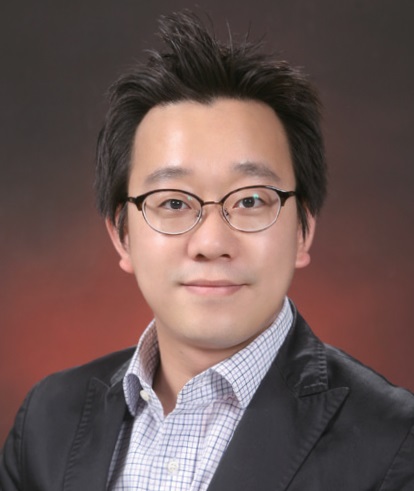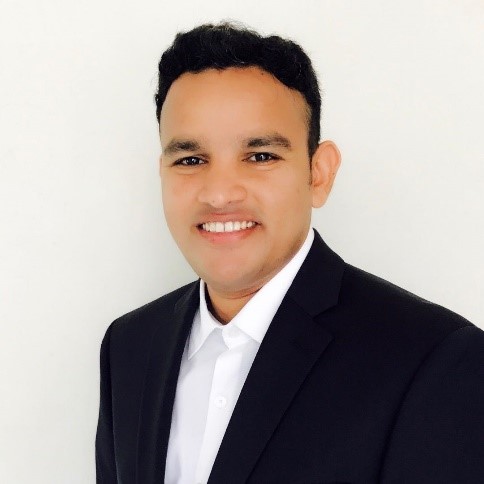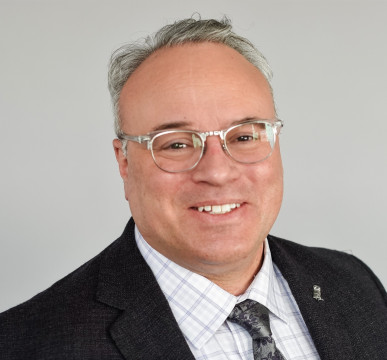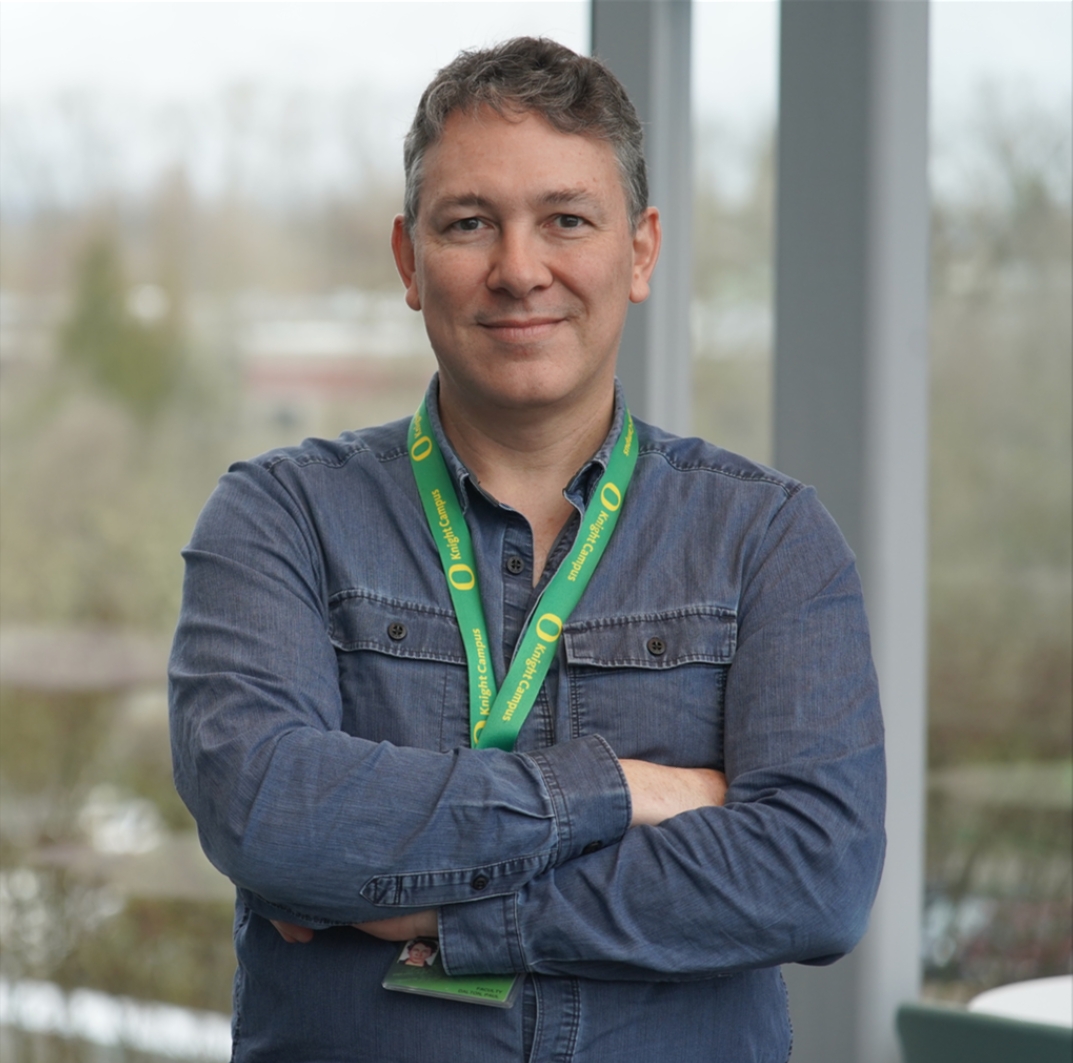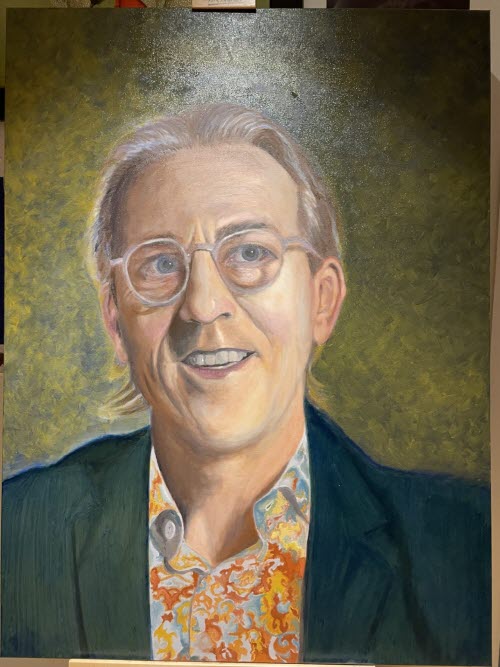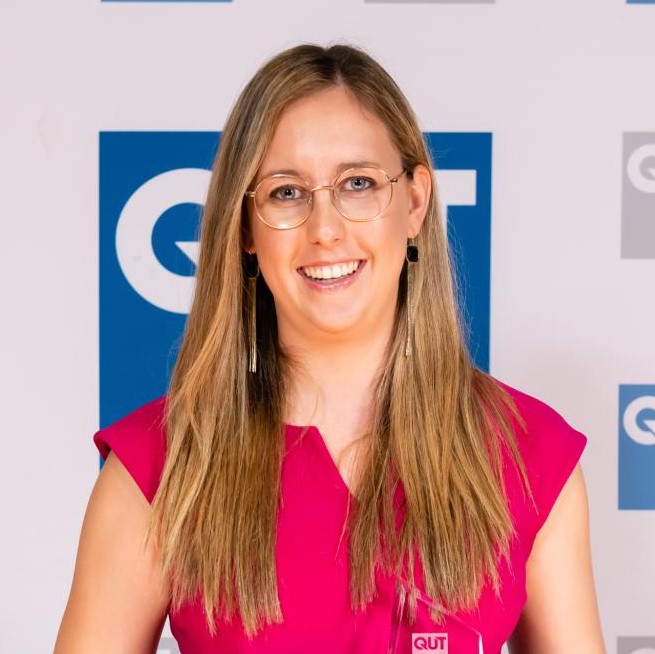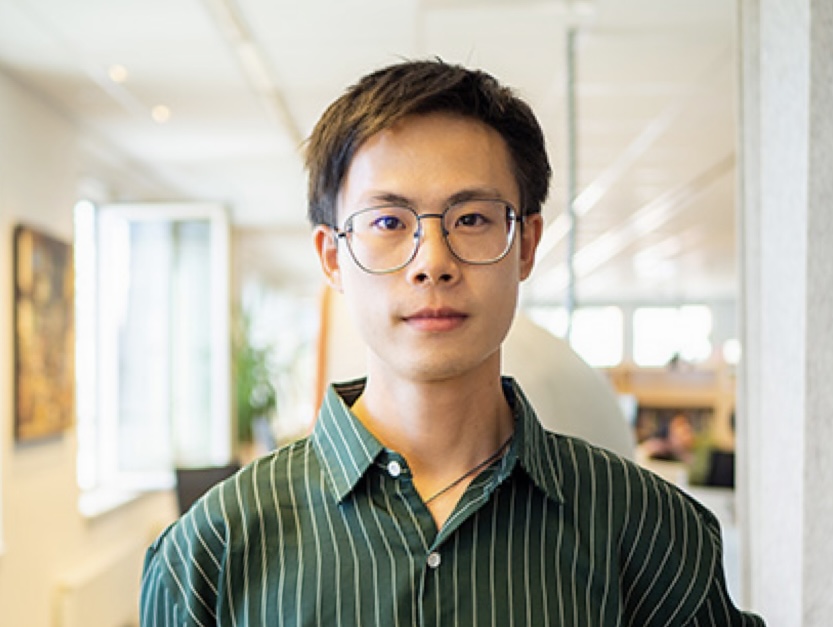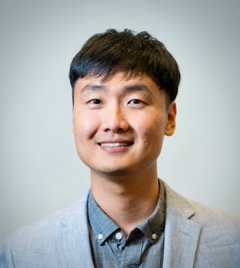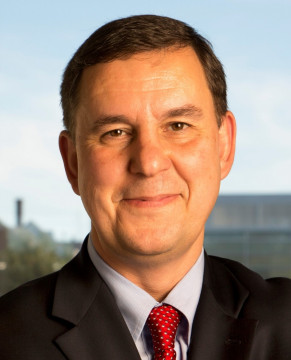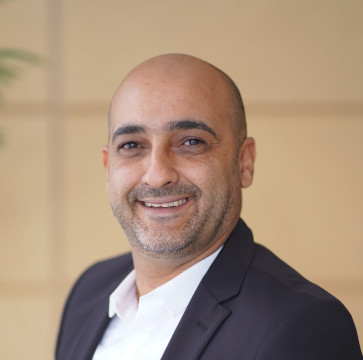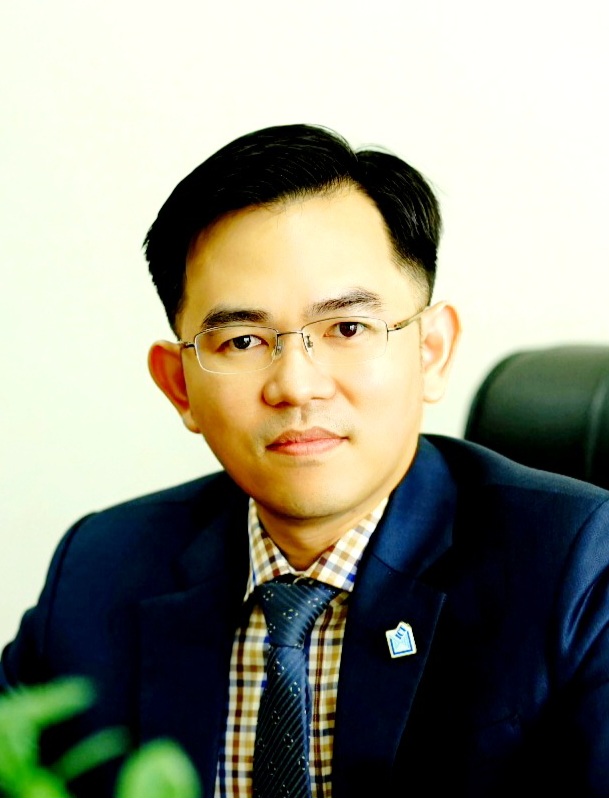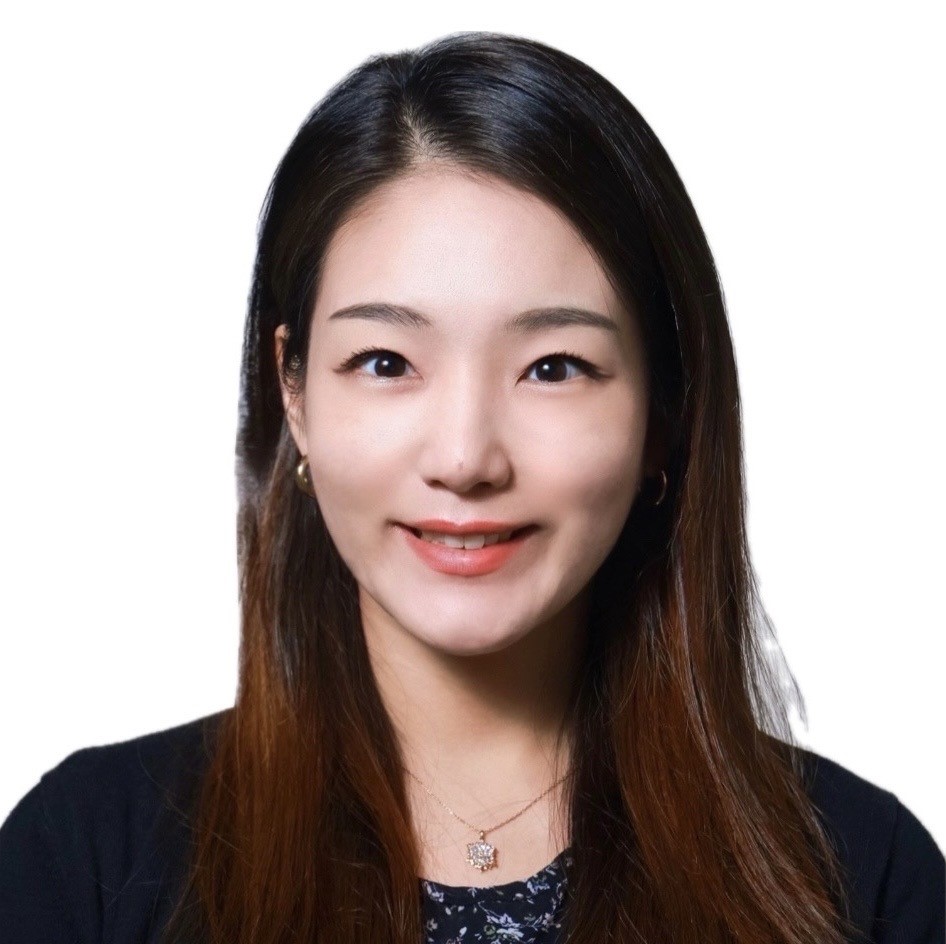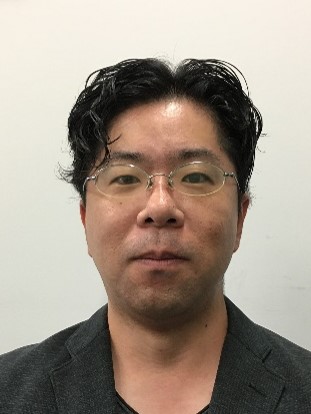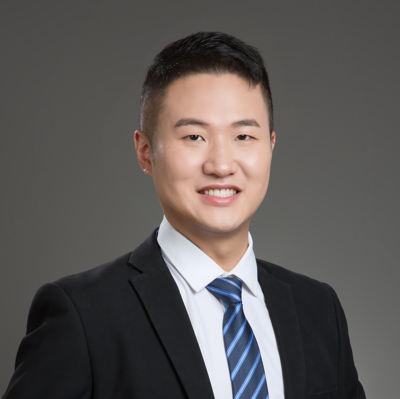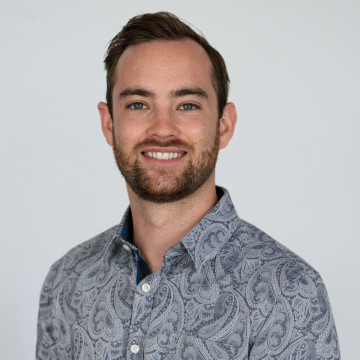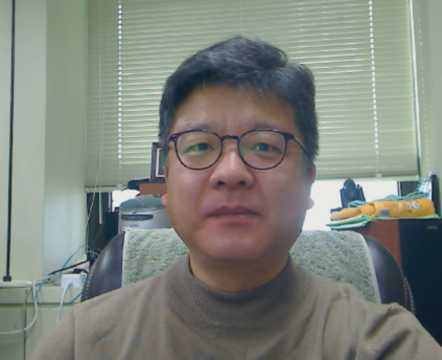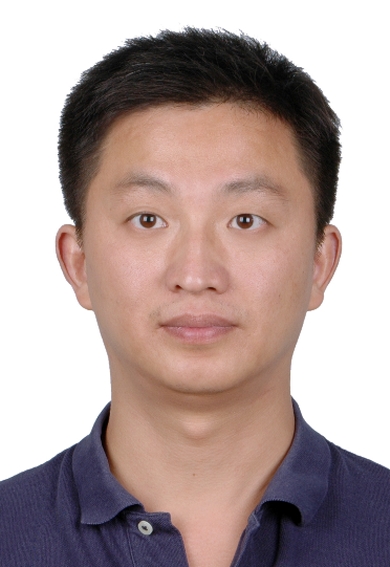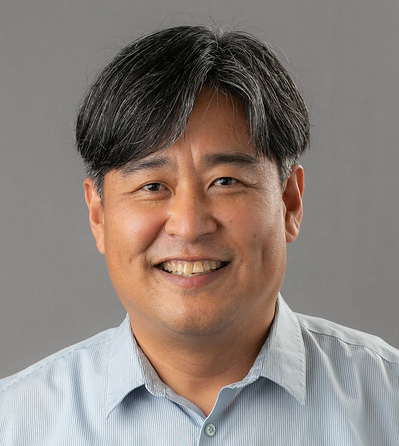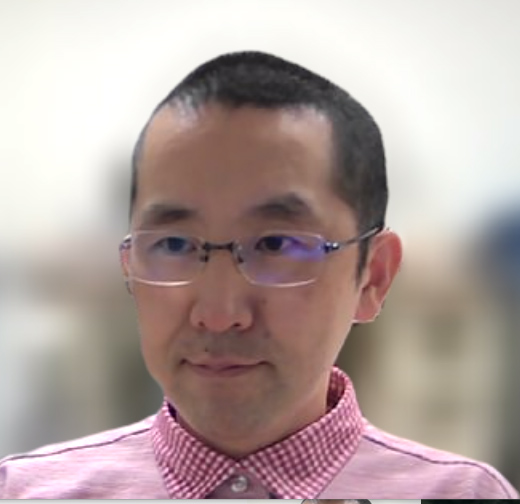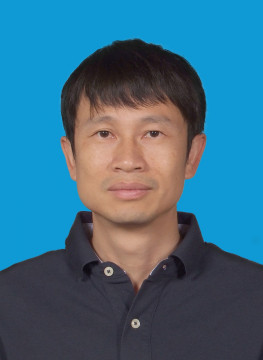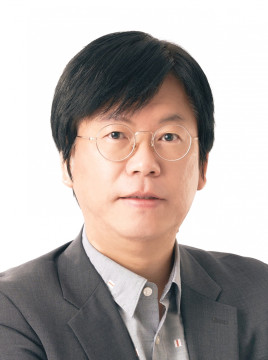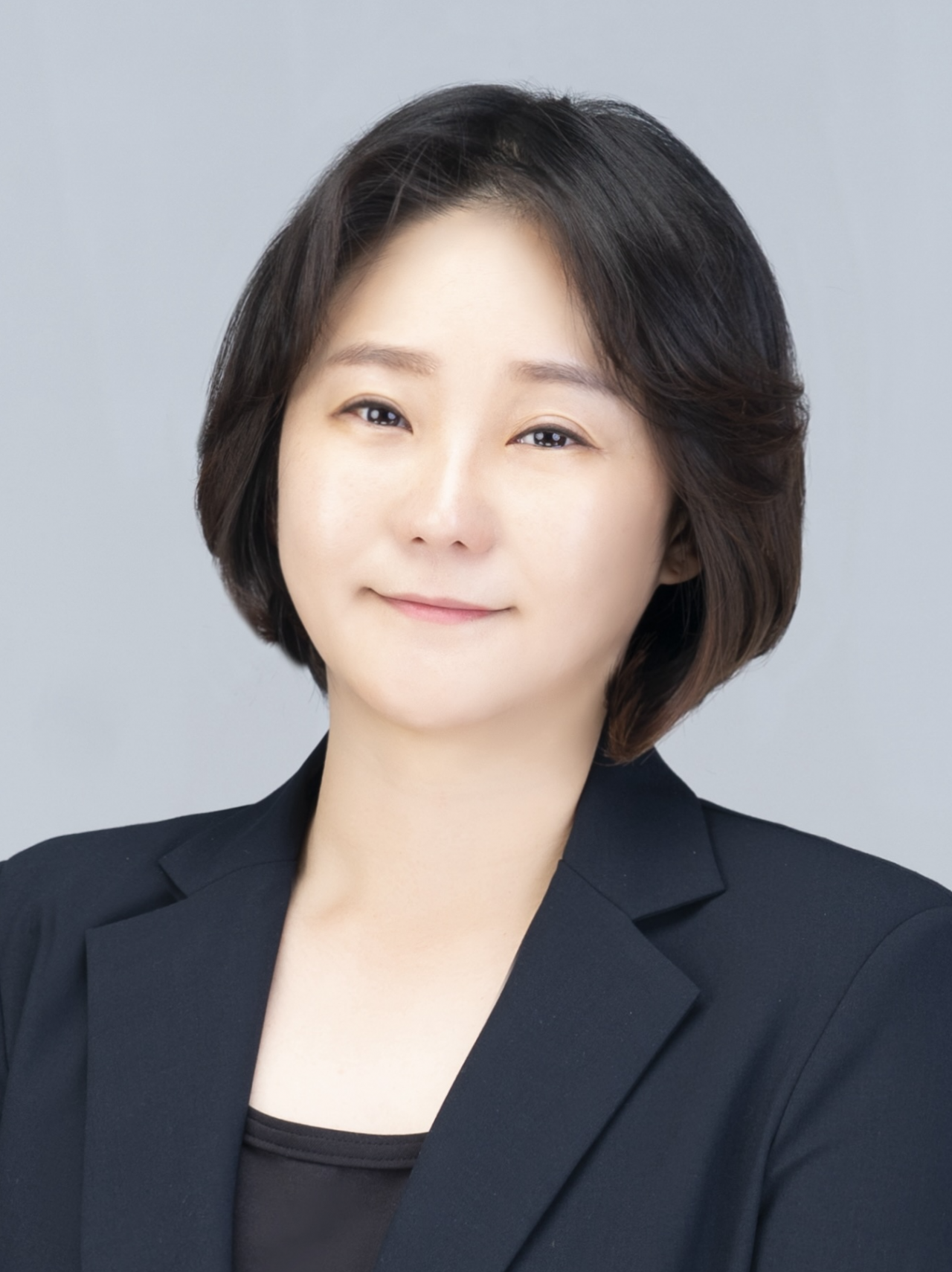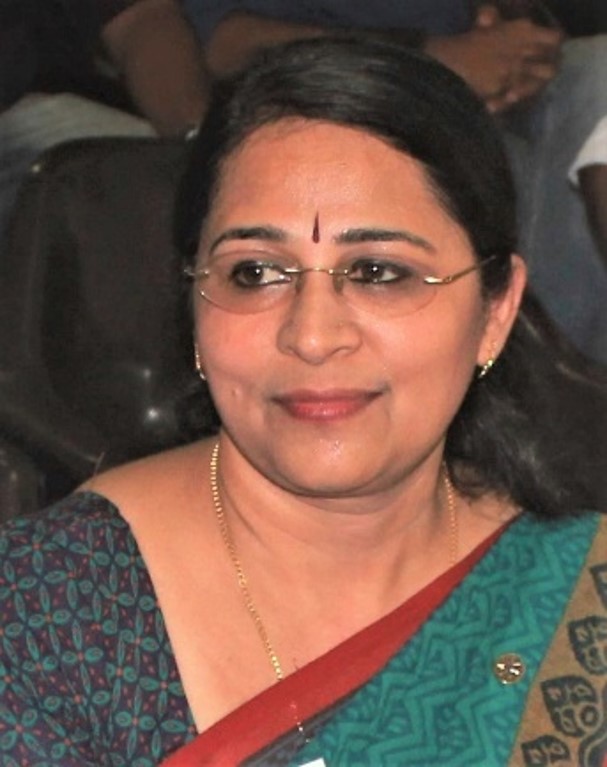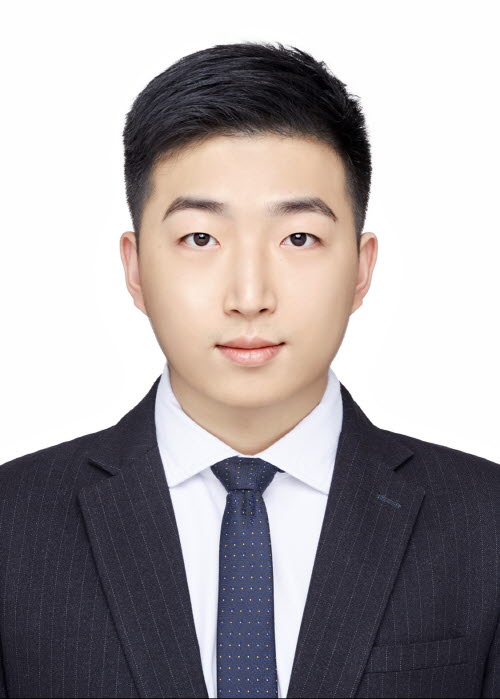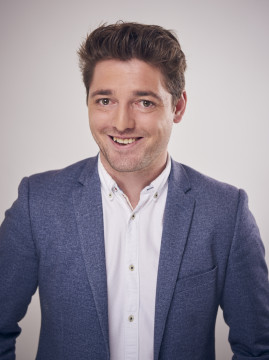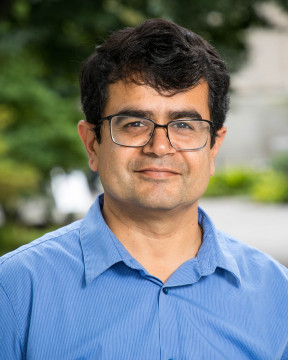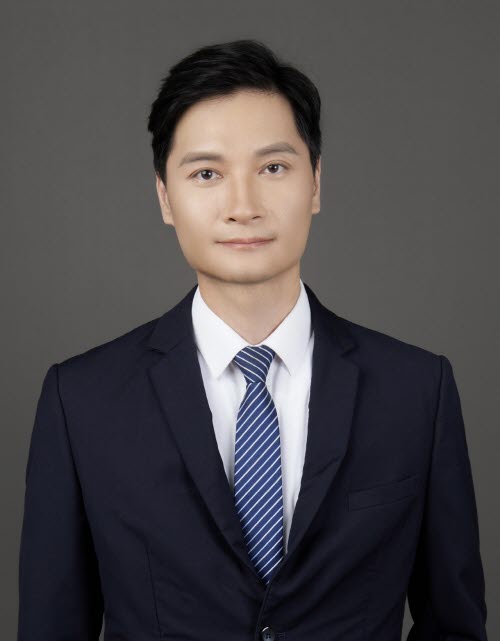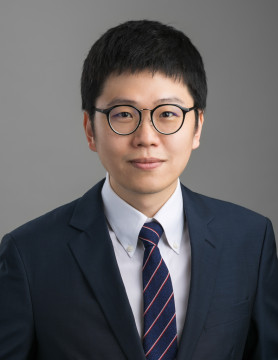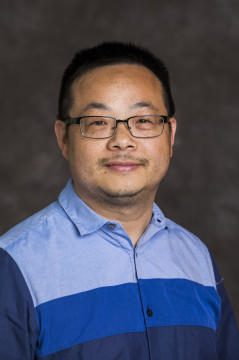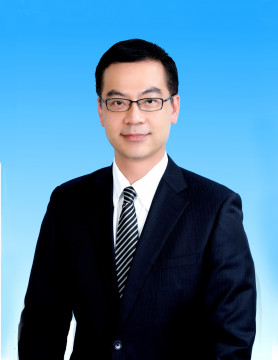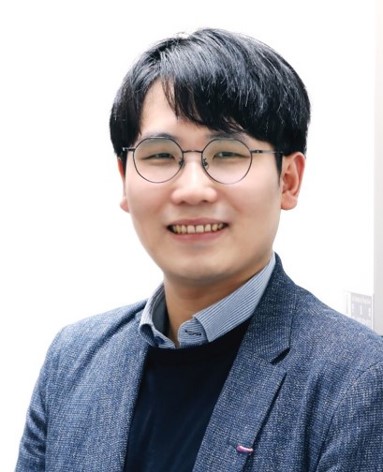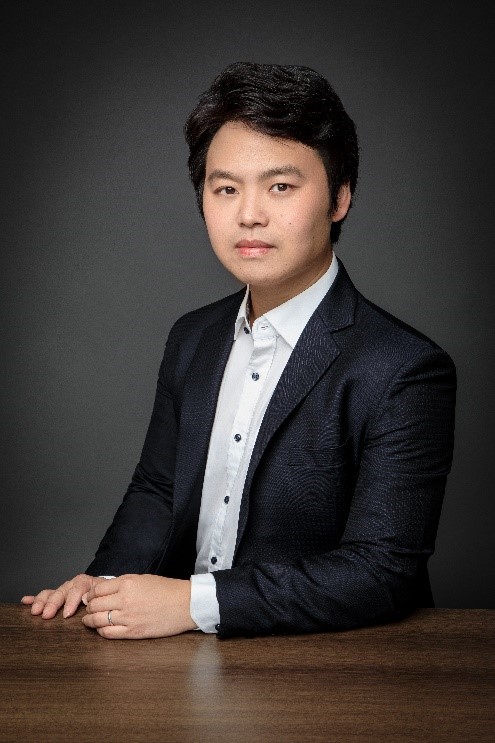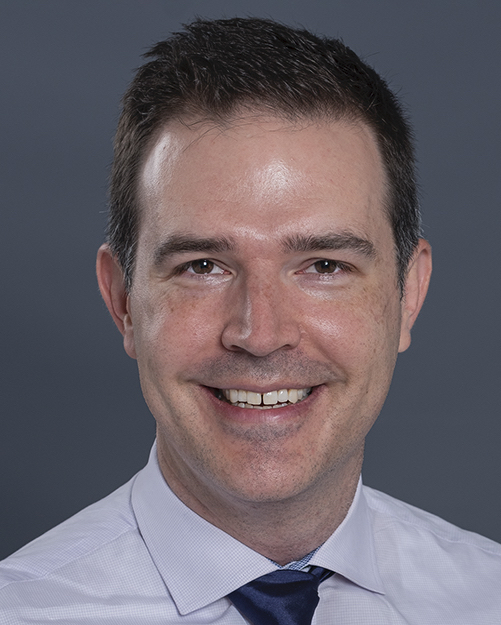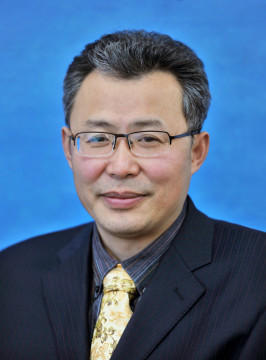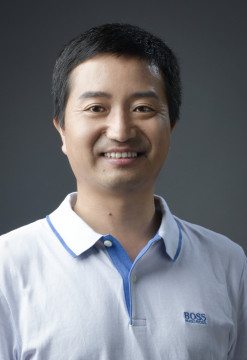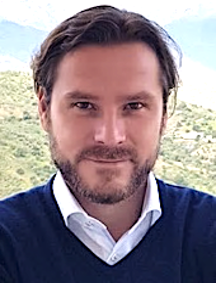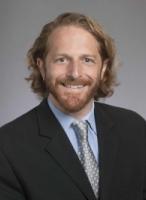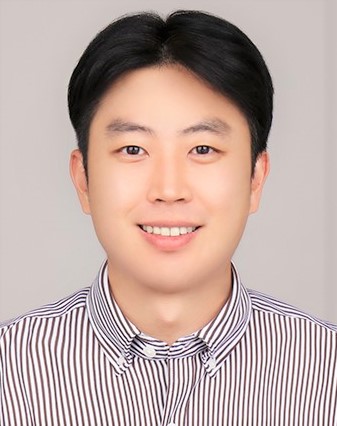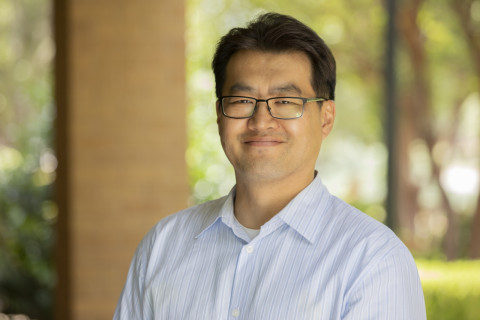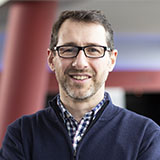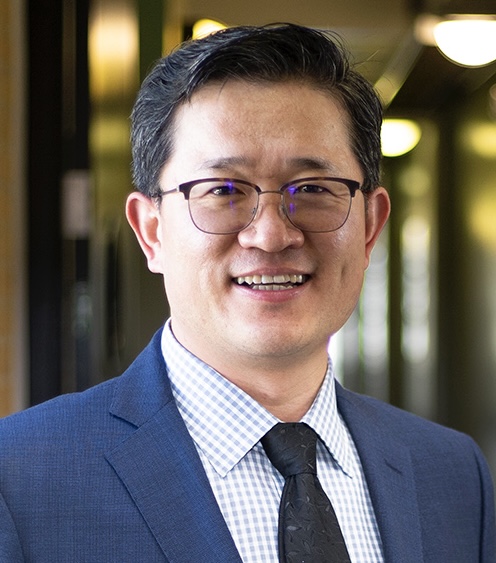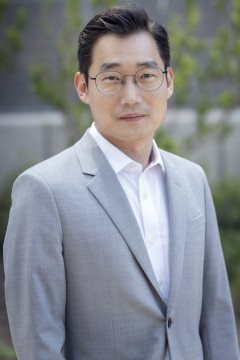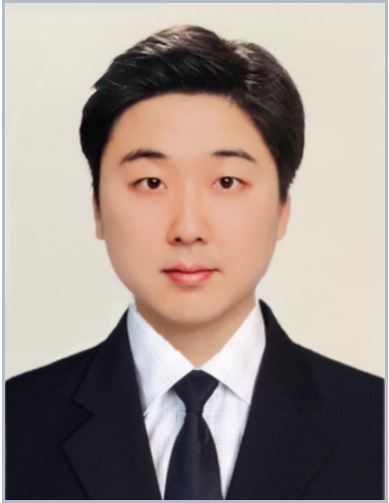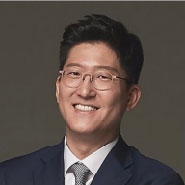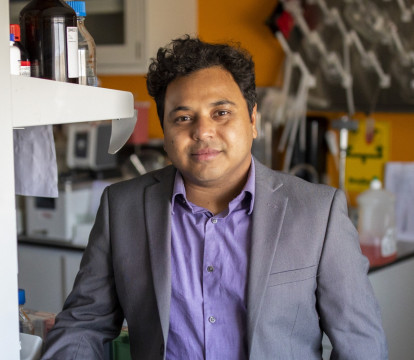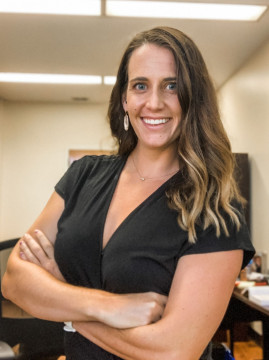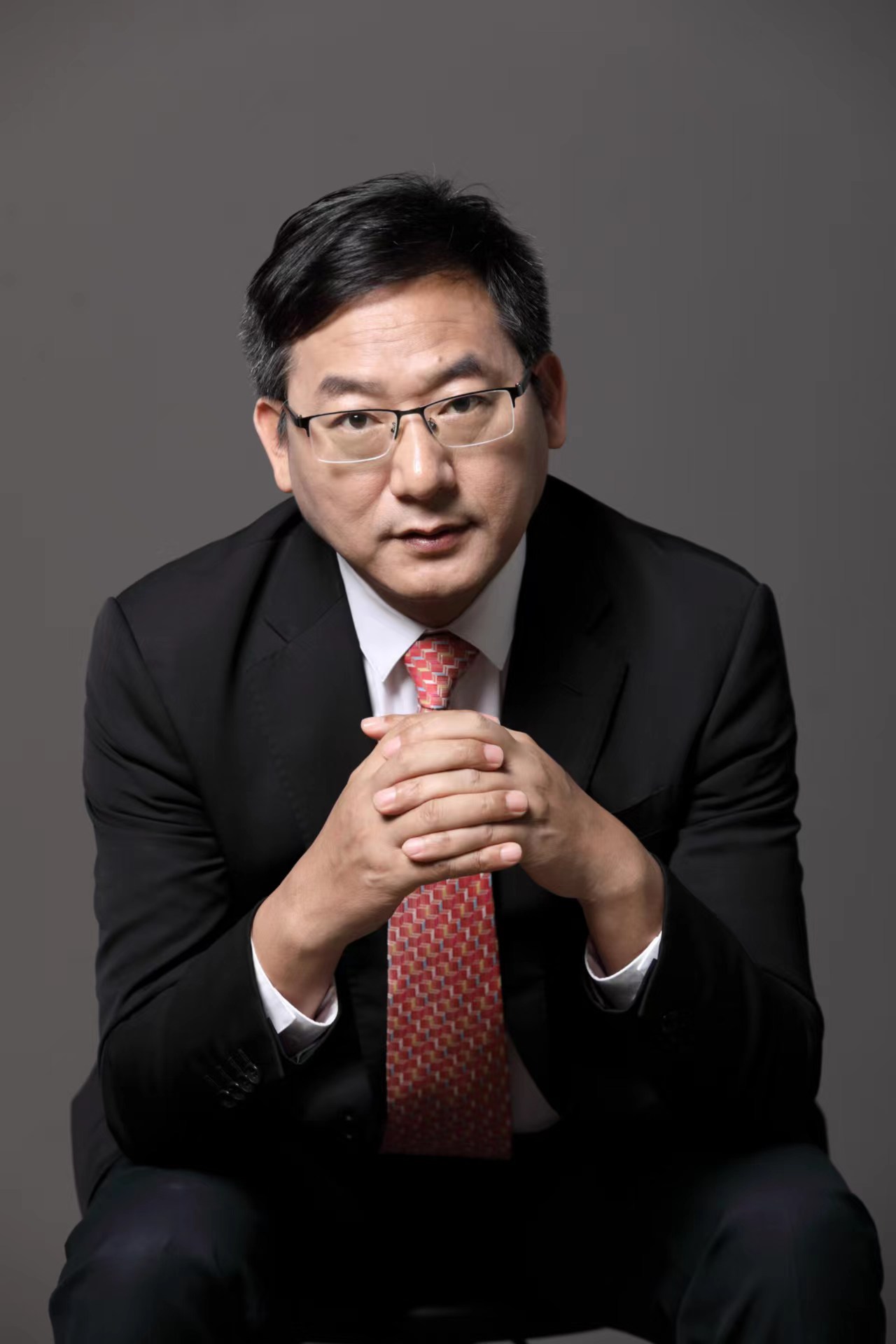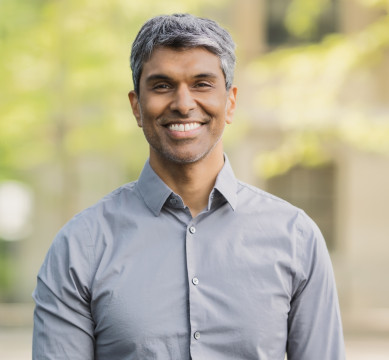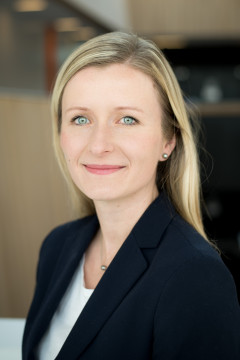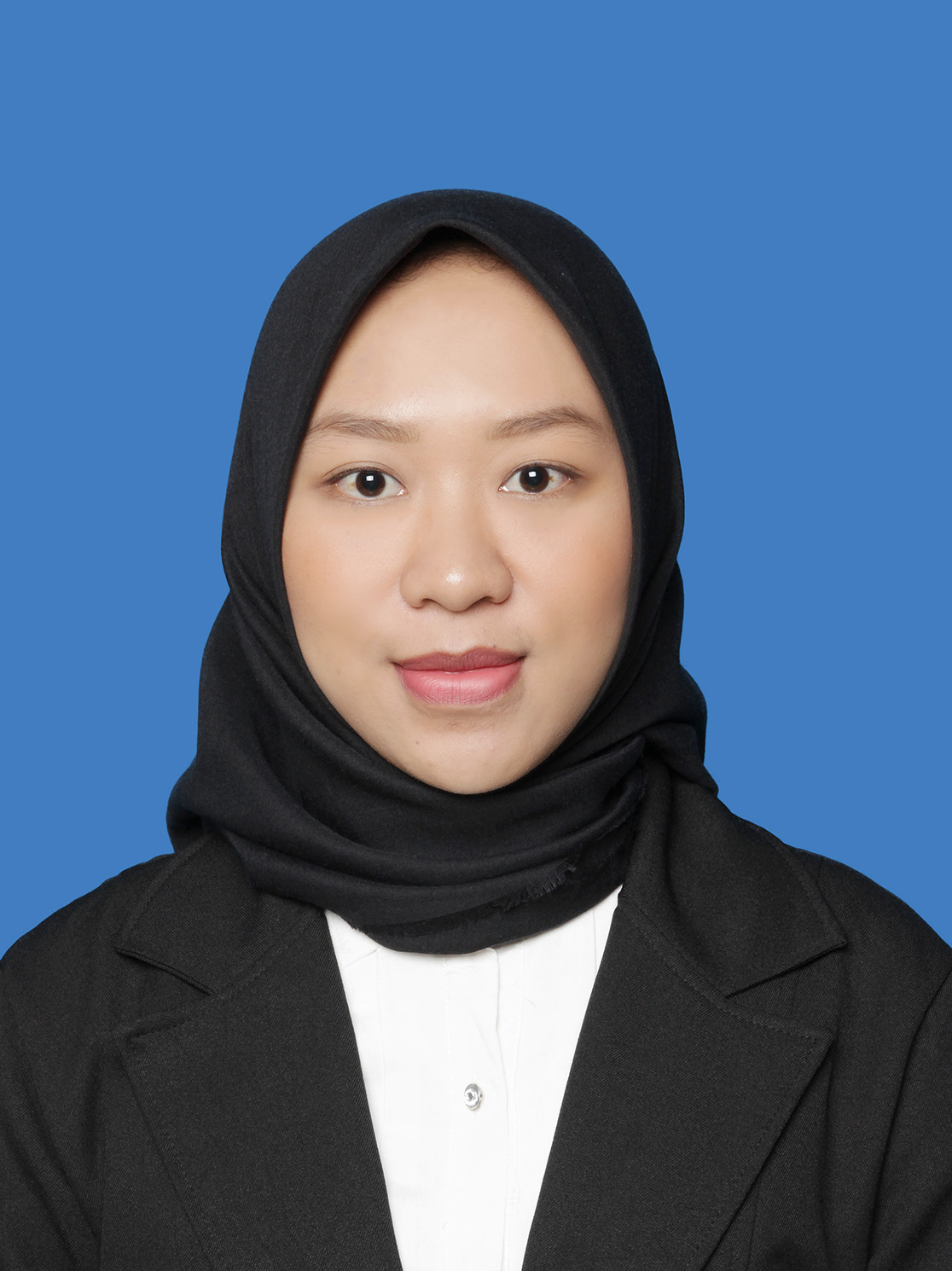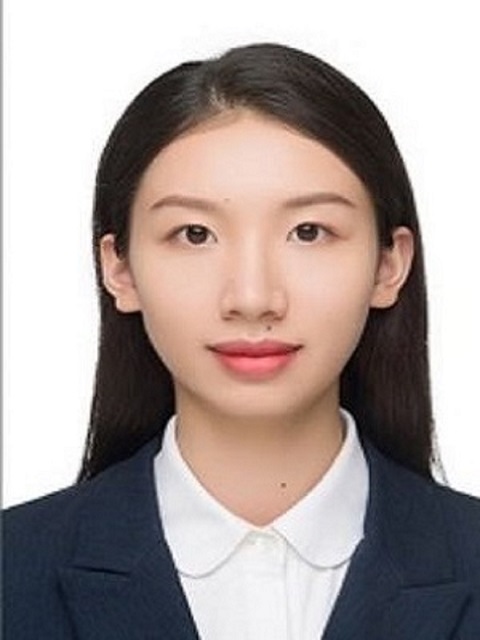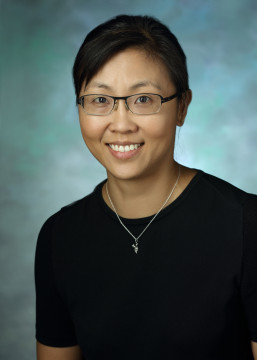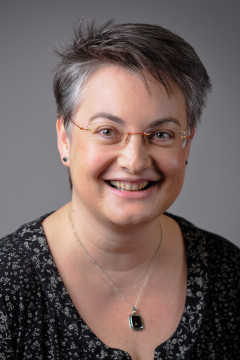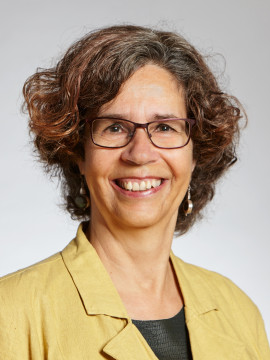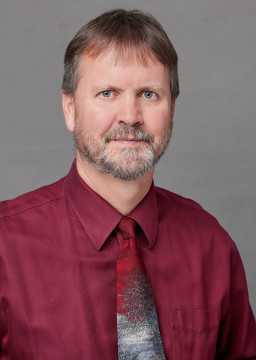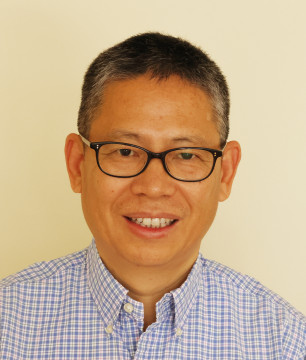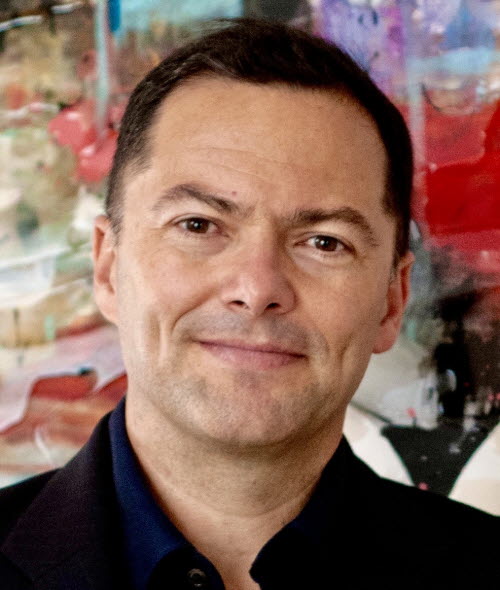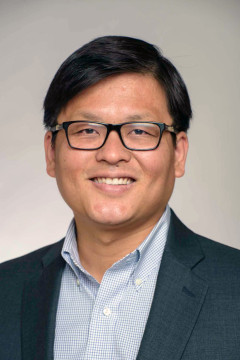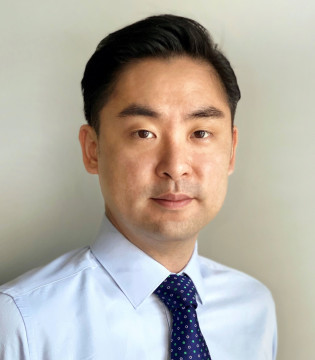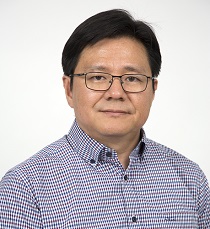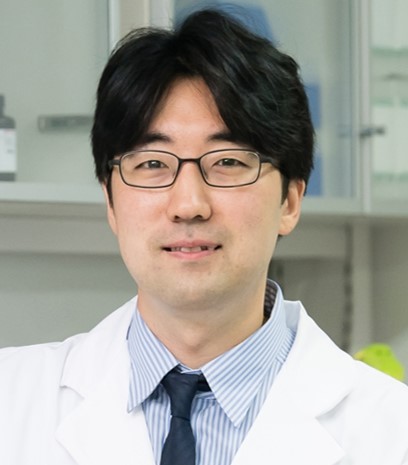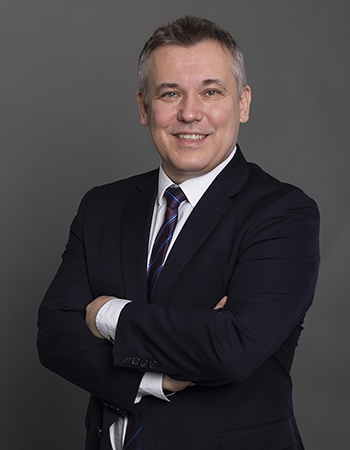Scientific Program
You can update your brief biography and profile picture on the [My Profile] page.
- Session TrackBiomaterials processing and biofabrication
- Session TitleNovel and multiple fabrication processes
- Session CodeSP-T02-0090
- Date & Time / RoomMay 27 (Mon) 13:00~14:30 / Room 325-CD
- Organizer
-
Hee-Gyeong Yi (Dept. of Convergence Biosystems Engineering/Chonnam National University, Korea, Republic of)
- Chair
-
Michiya Matsusaki (Department of Applied Chemistry, Osaka University, Japan)
Hee-Gyeong Yi (Dept. of Convergence Biosystems Engineering, Chonnam National University, Korea, Republic of)
- Keynote Speaker
-
Tan Lay Poh (School of Materials Science & Engineering, Nanyang Technological University (NTU), Singapore)
- Invited Speaker
-
13:25~13:40 : Machine learning-assisted optimization of printability in extrusion-based bioprinting Seung Yun Nam (Pukyong National University, Korea, Republic of)
- Oral Presenter
-
13:40~13:50 : 3D Bio-Screen Printing for the Industrial Production of Textured Cultivated Meat Precursors Robin Maatz (Technical University of Darmstadt, Germany)
13:50~14:00 : Formulation and bioprinting of xanthan gum/iron hydrogels with tunable stiffness for long-term carrying of unstable and low-viscosity proteins Monize Caiado Decarli (1- University of Maastricht and 2- University Medical Center Groningen, Netherlands)
14:00~14:10 : A hydrogel blend for immobilizing carrot callus with microextrusion bioprinting Susmita Ghosh (Chonnam National University, Korea, Republic of)
14:10~14:20 : Days- to weeks-long perfusion of human-scale artificial pancreatic tissues created using sacrificial embedded writing into alginate Brenden Moeun (McGill University, Canada)
14:20~14:30 : 3D printing of primary adipose tissue with silk scaffold for volumetric soft tissue reconstruction Wonwoo Jeong (Wake Forest Institute for Regenerative Medicine, USA)
- Session TrackBiomaterials processing and biofabrication
- Session TitleFrontiers in Biofabrication Technologies
- Session CodeSP-T02-0123
- Date & Time / RoomMay 28 (Tue) 16:30~18:00 / Room 325-CD
- Organizer
-
Lorenzo Moroni (Maastricht University, Netherlands)
- Chair
-
Lorenzo Moroni (Maastricht University, Netherlands)
Koichi Nakayama (Saga University, Japan)
- Keynote Speaker
-
16:30~16:55 : Dynamic biomaterials to enable biofabrication of personalized tissue mimics Sarah Heilshorn (Stanford University, USA)
- Invited Speaker
-
16:55~17:10 : Matryoshka-inspired Biological Constructs to mimic skeletal niche for osteochondral regeneration Lorenzo Moroni (Maastricht University, Netherlands)
17:10~17:25 : Inventing for scalability: creating a formulation library to bioprint any human tissue from one tuneable synthetic biomaterial foundation Martin Engel (Inventia Life Science, Australia)
17:25~17:40 : Tissue regenerative medicine research using 3D bioprinters and bioinks Dong Hyuk Lee (Gachon University, CleCell Co., Ltd., Korea, Republic of)
- Oral Presenter
-
17:40~17:50 : Bioinspired scaffolds for the regeneration of the temporomandibular joint Joanna BABILOTTE (MERLN Institute, Netherlands)
- Session TrackBiomaterials processing and biofabrication
- Session TitleMulti-layer biomaterials: emerging applications
- Session CodeSP-T02-0126
- Date & Time / RoomMay 30 (Thu) 16:30~18:00 / Room 320-B
- Organizer
-
Wei Li (Texas Tech University, USA)
- Chair
-
Wei Li (Texas Tech University, USA)
Michiya Matsusaki (Osaka University, Japan)
- Keynote Speaker
-
16:30~16:55 : Development of layer-by-layer films for regenerative medicine and cell signalling studies: application to bone tissue engineering Catherine Picart (French Alternative Energies and Atomic Energy Commission, France)
- Invited Speaker
-
16:55~17:10 : Building Bioactivity into Slippery Liquid-Infused Porous Surfaces David Lynn (University of Wisconsin Madison, USA)
17:10~17:25 : Tissue-interfaced electronics with multi-layered structure Toshinori Fujie (Tokyo Institute of Technology, Japan)
- Oral Presenter
-
17:25~17:35 : 4D printed scaffolds for tissue repair and regeneration Kaushik Chatterjee (Indian Institute of Science, India)
17:35~17:45 :
SURFACE FUNCTIONALIZATION OF TITANIUM IMPLANTS FOR BIOLOGICALLY ACTIVE SURFACES: ALTERNATING CURRENT ELECTROPHORETIC DEPOSITION AND ATMOSPHERIC PRESSURE PLASMA TECHNOLOGYMerve Kübra Aktan (Katholieke Universiteit Leuven, Belgium)17:45~17:55 : Development of the core, titanium based material and polymer coating for the needs of individualized regenerative medical applications Ewa Rzad (Lukasiewicz Research Network – Krakow Institute of Technology, Poland)
17:55~18:05 : 3D printing of diamond for an iImproved hard tissue bio-interface Kate Fox (RMIT, Australia)
- Session TrackBiomaterials processing and biofabrication
- Session TitleBiofunctional material and this use in medical device application
- Session CodeSP-T02-0389
- Date & Time / RoomMay 27 (Mon) 14:40~16:10 / Room 325-CD
- Organizer
-
Jayden Park (Evonik Korea Ltd., Korea, Republic of)
- Chair
-
Hyuk Sang Yoo (Kangwon National University, Korea, Republic of)
Jake Cho (Evonik Korea Ltd., Korea, Republic of)
- Keynote Speaker
-
14:40~15:05 : Innovating biomaterials for clinical use Andreas Karau (Evonik Operations GmbH, Germany)
- Invited Speaker
-
15:05~15:20 : Advancements in 3D-printed bioresorbable medical devices, bio-surgical solutions, and 3D bioprinting Heidy Cruz (T&R Biofab, Korea, Republic of)
15:20~15:35 : Artificial Intelligence Convergence Hyper-personalized SKIN Regeneration 3D Bioprinting Technology Jeehee Kim (ROKIT Healthcare, Inc., Korea, Republic of)
15:35~15:50 : Biomimetic and biosynthetic building blocks as platform technology in 3D-bioprinting Andreas Blaeser (Technical University of Darmstadt, Institute for Biomedical printing technology, Germany)
- Oral Presenter
-
15:50~16:00 : Minimalistic strategies for designing new biomaterial solutions: From thin platforms to living materials Tiago Correia (University of Aveiro, Portugal)
16:00~16:10 : Bioinspired alginate-based bioinks to fabricate chemomechanically relevant disease models of hepatic steatosis Giuseppe Guagliano (Polytechnic University of Milan, Italy)
- Session TrackBiomaterials processing and biofabrication
- Session TitleBiofabrication strategies to engineer complex tissues
- Session CodeSP-T02-0145
- Date & Time / RoomMay 28 (Tue) 9:30~11:00 / Room 325-AB
- Organizer
-
Lesley Chow (Lehigh University, USA)
- Chair
-
Lesley Chow (Lehigh University, USA)
Liliang Ouyang (Tsinghua University, China)
- Keynote Speaker
-
9:30~9:55 : Light-based Biofabrication of Mammary Tissue Marcy Zenobi-Wong (ETH Zurich, Switzerland)
- Invited Speaker
-
9:55~10:10 : 3D bioprinting of transplantable tracheas Yong He (Zhejiang University, China)
10:10~10:25 : Recreating tendon structure and biomechanical environment using magnetic 3D Bioprinting Manuela Gomes (3B's Research Group, University of Minho, Portugal)
- Oral Presenter
-
10:25~10:35 : 3D Bioprinting of Perfusable Networks Using an Interfacial Diffusant Strategy Betty Cai (Stanford University, USA)
10:45~10:55 : 3D-Printing of Scaffolds with Surface Micropatterns For Oriented Tissue Regeneration Yonghui Ding (Worcester Polytechnic Institute, USA)
- Session TrackBiomaterials processing and biofabrication
- Session TitleConverged Technologies towards Tissue Biofabrication
- Session CodeSP-T02-0156
- Date & Time / RoomMay 28 (Tue) 13:40~15:10 / Room 325-CD
- Organizer
-
Y. Shrike Zhang (Harvard Medical School, USA)
- Chair
-
Y. Shrike Zhang (Harvard Medical School, USA)
Jinah Jang (Pohang University of Science and Technology, Korea, Republic of)
- Keynote Speaker
-
13:40~14:05 : Biointerface fiber technology from electrospinning to in situ fibre printing Yan Yan Shery Huang (University of Cambridge, United Kingdom)
- Invited Speaker
-
14:05~14:20 : Enabling bioinks with tunable mechanical and topological cues for 3D cell culture and vascularization Liliang Ouyang (Tsinghua University, China)
14:20~14:35 : Convergence of Biofabrication Approaches for the Generation of Small Diameter Vascular Tissue Models Tomasz Jungst (University of Würzburg, Germany)
- Oral Presenter
-
14:35~14:45 : Advanced materials and biofabrication technologies to design in vitro central nervous system models Chiara Tonda Turo (Politecnico di Torino, Italy)
14:45~14:55 : Mechanical Behavior of 3D Printed Continuous Carbon Fiber Reinforced PEKK Composites for Trauma Plate Applications Steven Kurtz (Drexel University, USA)
- Session TrackBiomaterials processing and biofabrication
- Session TitleFostering international multidisciplinary collaboration in biomaterials research: Australasia- Germany case study (sponsored by Maverick)
- Session CodeSP-T02-0201
- Date & Time / RoomMay 31 (Fri) 11:20~12:50 / Room 321-B
- Organizer
-
Khoon Lim (University of Sydney, Australia)
- Chair
-
Michael Gelinsky (Technische Universität Dresden, Germany)
Jelena Rnjak-Kovacina (University of New South Wales, Australia)
- Keynote Speaker
-
Juergen Groll (University of Würzburg, Germany)
- Invited Speaker
-
11:45~12:00 : Structure, stimulation, and close interactions: keys to enhancing outcomes from international and multidisciplinary tissue engineering research Andrea O'Connor (University of Melbourne, Australia)
12:00~12:15 : What are the factors that drive effective international collaborations? Helmut Thissen (Commonwealth Scientific and Industrial Research Organisation, Australia)
- Oral Presenter
-
12:15~12:25 : Bioprinting Corneal Tissue Mimics In Situ using Visible-Light Photopolymerizable Bioinks Daniela Duarte Campos (Heidelberg University, Germany)
12:25~12:35 : Dual-stage crosslinking hyaluronic acid-based bioinks for bioprinting advanced cartilaginous tissues Joerg Tessmar (University of Würzburg, Germany)
12:35~12:45 : Multi-architectural scaffold design unlocking clinically relevant cardiac patch attachment Johannes Braig (University Hospital of Wuerzburg, Germany)
- Session TrackBiomaterials processing and biofabrication
- Session TitleInjectable Hydrogels For Regenerative Medicine
- Session CodeSP-T02-0250
- Date & Time / RoomMay 31 (Fri) 9:30~11:00 / Room 325-CD
- Organizer
-
Arghya Paul (The University of Western Ontario, Canada)
- Chair
-
Arghya Paul (The University of Western Ontario, Canada)
Akhilesh Gaharwar (Texas A&M University, USA)
- Keynote Speaker
-
9:30~9:55 : Bioinspired immunomodulatory materials for regenerative medicine Milica Radisic (University of Toronto, Canada)
- Invited Speaker
-
9:55~10:10 : Dynamic covalently-crosslinked zwitterionic injectable hydrogels enabling functional muscle repair and bioprinting of tissue mimics Todd Hoare (McMaster University, Canada)
10:10~10:25 : Immediately injectable dental stem cells-laden chitosan/hyaluronic acid hydrogel for vascularized bone tissue regeneration Sang Jin Lee (The University of Hong Kong, Hong Kong SAR, China)
10:25~10:40 : 3D printed stretchable skin scaffold for human joint Jin Woo Lee (Gachon University, Korea, Republic of)
- Oral Presenter
-
10:40~10:50 : Time dependent Alginate Dialdehyde-Gelatin bioinks for cardiac regeneration Elena Marcello (Politecnico di Torino, Italy)
10:50~11:00 : Photo-crosslinked Mucin Bioink for 3D Bioprinting and Soft Tissue Engineering Sruthi C S (Indian Institute of Science, India)
- Session TrackBiomaterials processing and biofabrication
- Session TitleOpen-source and low-cost technologies for advanced biomaterials fabrication
- Session CodeSP-T02-0359
- Date & Time / RoomMay 30 (Thu) 9:30~11:00 / Room 321-A
- Organizer
-
Adam Feinberg (Carnegie Mellon University, USA)
- Chair
-
Adam Feinberg (Carnegie Mellon University, USA)
Mark Skylar-Scott (Stanford University, USA)
- Keynote Speaker
-
9:30~9:55 : Tissue Assembloids via Low-Cost Biofabrication Setups Yan Yan Shery Huang (University of Cambridge, United Kingdom)
- Invited Speaker
-
9:55~10:10 : Open-source low-cost 3D bioprinters for advanced biomanufacturing Daniel Shiwarski (University of Pittsburgh, USA)
10:10~10:25 : High-precision 3D cell spheroid printing technology to produce engineered tissue with enhanced functionality Hyun-Wook Kang (Ulsan National Institute of Science and Technology, Korea, Republic of)
- Oral Presenter
-
10:25~10:35 : The MEWron: Open-source melt electrowriting Simon Luposchainsky (Kyoto Institute of Technology, Japan)
10:35~10:45 : Effects of Painting Parameters on Tribological Properties in 3D Printed Parts Okan Gul (kocaeli university, Türkiye)
- Session TrackBiomaterials processing and biofabrication
- Session TitleAdditive manufacturing of biomaterials
- Session CodeSP-T02-0142
- Date & Time / RoomMay 30 (Thu) 13:40~15:10 / Room 325-CD
- Organizer
-
Masaya Yamamoto (Tohoku University, Japan)
- Chair
-
Masaya Yamamoto (Tohoku University, Japan)
Miho Nakamura (University of Turku, Finland)
- Keynote Speaker
-
13:40~14:05 : Development of novel spinal fusion spacer fabricated by metal additive manufacturing focusing on the orientation of bone tissue architecture Takayoshi Nakano (Osaka University, Japan)
- Invited Speaker
-
14:05~14:20 : Novel Support-less Bioceramics Additive Manufacturing Process in a Hydrogel Bath Hui-suk Yun (Korea Institute of Materials Science, Korea, Republic of)
Artemis Stamboulis (University of Birmingham, United Kingdom)
- Oral Presenter
-
14:35~14:45 : Bioactive Ceramic for Immunotherapy: Effect of ionic composition on macrophage anti-inflammatory phenotypic expression Miho Nakamura (University of Turku/Tokyo Medical and Dental University, Finland)
14:45~14:55 : Modulated stem cell differentiation by 3D sandwich cell culture using stiffness-tunable hydrogels Masaya Yamamoto (Tohoku University, Japan)
14:55~15:05 : 3D printed Bioglass scaffolds with gyroid architecture for bone regeneration using DLP Meryem Lamari (Imperial College London, United Kingdom)
- Session TrackBiomaterials processing and biofabrication
- Session Title3D Printing and Biofabrication in TERM, on the way to translation
- Session CodeSP-T02-0154
- Date & Time / RoomMay 29 (Wed) 16:30~18:00 / Room 323
- Organizer
-
Aleksandr Ovsianikov (TU Wien [Technische Universität Wien], Austria)
- Chair
-
Aleksandr Ovsianikov (TU Wien [Technische Universitaet Wien], Austria)
Tim Woodfield (University of Otago, New Zealand)
- Keynote Speaker
-
Scott Hollister (Georgia Institute of Technology and Emory University, USA)
- Invited Speaker
-
Jinah Jang (Pohang University of Science and Technology, Korea, Republic of)
17:10~17:25 : Bioengineering an Ovarian Microenvironment Informed by the Human Ovary BioMolecular Atlas Monica Laronda (Northwestern University, USA)
- Oral Presenter
-
17:25~17:35 : 3D Bio-printing for Tissue Engineering Application Binbin Sun (Donghua University, China)
17:35~17:45 : Alveolar bone repair of rhesus monkeys by using BMP-2 gene and MSCs loaded three-dimensional printed bioglass scaffold Weikang Xu (Institute of biological and Medical Engineering, Guangdong Acamedy of Sciences, China)
17:45~17:55 : Additive manufactured porous titanium with gradient structure balancing bone ingrowth and antibacterial activity: evaluation of in vitro antibacterial activity Seiji Yamaguchi (Chubu University, Japan)
- Session TrackBiomaterials processing and biofabrication
- Session TitleVolumetric tissue printing
- Session CodeSP-T02-0267
- Date & Time / RoomMay 27 (Mon) 16:30~18:00 / Room 325-CD
- Organizer
-
Jinah Jang (Pohang University of Science and Technology, Korea, Republic of)
- Chair
-
Riccardo Levato (University Medical Center Utrecht, Netherlands)
Jinah Jang (Pohang University of Science and Technology, Korea, Republic of)
- Keynote Speaker
-
16:30~16:55 : Filamented Light (FLight) Biofabrication of Tendons and Muscle Marcy Zenobi-Wong (ETH Zurich, Switzerland)
- Invited Speaker
-
16:55~17:10 : Volumetric bioprinting: from the first development to advanced imaging-guided and multi-technology biofabrication Riccardo Levato (University Medical Center Utrecht, Netherlands)
- Oral Presenter
-
17:10~17:20 : Stable and Homogeneous SPION-infused Photo-Resins for 3D-Printing Magnetic Hydrogels Ali Mohammed (Royal College of Art, Imperial College London, United Kingdom)
17:20~17:30 : Melt electrowriting and its applications in biofabrication for the generation of synthetic tubular constructs with defined mechanical characteristics Michael Bartolf-Kopp (Universitätsklinikum Würzburg, Germany)
17:30~17:40 : Development of Efficient Photoinitiating Systems for 3D Printing Pu Xiao (Chinese Academy of Sciences, China)
17:40~17:50 : Visible Light-Induced 3D Co-axial Bioprinting of 3D Biomimetic Liver-like Tissue Module with Patterned Vascular Structures for Volumetric Tissue Reconstruction Daekeun Kim (Pohang University of Science and Technology, Korea, Republic of)
17:50~18:00 : Fibrillogenesis-inhibited collagen-based photoclick resins enable facile volumetric biofabrication of multi-cellular tissues Parth Chansoria (ETH Zurich, Switzerland)
- Session TrackBiomaterials processing and biofabrication
- Session TitleCreating 3D architectures to facilitate organ regeneration
- Session CodeSP-T02-0076
- Date & Time / RoomMay 31 (Fri) 11:20~12:50 / Room 320-B
- Organizer
-
Qi Gu (Beijing Institute for Stem Cell and Regenerative Medicine, China)
- Chair
-
Qi Gu (Beijing Institute for Stem Cell and Regenerative Medicine, China)
- Keynote Speaker
-
TBD (, )
- Invited Speaker
-
11:45~12:00 : Exploring controlled cell movement to create engineered organs with natural properties Qi Gu (Beijing Institute for Stem Cell and Regenerative Medicine, China)
12:00~12:15 : Developing Personalized Vein-Chips for Enhanced Cerebral Venous Sinus Thrombosis Diagnosis using a Movable Type Manufacturing Technique Arnold Lining Ju (University of Sydney, Australia)
- Oral Presenter
-
12:15~12:25 : Designing gradient bioinks for the musculoskeletal interface Lesthuruge De Silva (Deakin University, Australia)
12:25~12:35 : Bioprinting-assisted Tissue Assembly for Studying Cardiac Pathophysiology Dong Gyu Hwang (POSTECH, Korea, Republic of)
12:35~12:45 : Gastric-cancer-on-a-chip for predicting precision anti-cancer therapy. Jisoo Kim (POSTECH, Korea, Republic of)
- Session TrackBiomaterials processing and biofabrication
- Session TitleBiofabrication in Suspensions Media for Tissue Engineering and In Vitro Modeling
- Session CodeSP-T02-0356
- Date & Time / RoomMay 29 (Wed) 13:40~15:10 / Room 325-CD
- Organizer
-
Manuela Gomes (3B's Research Group, University of Minho, Portugal)
- Chair
-
Manuela Gomes (3B's Research Group, University of Minho, Portugal)
Andrew Daly (National University of Ireland Galway, Ireland)
- Keynote Speaker
-
13:40~14:05 : Advances in suspension bath printing to control the organization of cells and materials Jason Burdick (University of Colorado Boulder, USA)
- Invited Speaker
-
14:05~14:20 : Biomanufacturing in vitro tendon microenvironments in suspension Rui M. A. Domingues (3B's Research Group, University of Minho, Portugal)
14:20~14:35 : Bioprinting models of early organ morphogenesis using cell-responsive hydrogels Andrew Daly (National University of Ireland Galway, Ireland)
- Oral Presenter
-
14:35~14:45 : Enhanced angiogenic response of bioprinted vessel-like structures enriched with platelet rich plasma Maria Chatzinikolaidou (Foundation for Research and Technology Hellas (FORTH) Institute of Electronic Structure and Laser 100, N. Plastira str. Vassilika Vouton GR-70013 Heraklion, Greece VAT 090101655., Greece)
14:45~14:55 : Support baths to float your boat: 3D printing of low-viscosity PEG/graphene oxide inks to engineer vascular grafts Helena Ferreira (i3S - Instituto de Investigação e Inovação em Saúde, Universidade do Porto, Portugal)
14:55~15:10 : Hydrogel microfibers as a granular material and its application as an ink or support bath in bioprinting
Chris Highley (University of Virginia, USA)
- Session TrackBiomaterials processing and biofabrication
- Session TitleBio-hybrid tissue printing
- Session CodeSP-T02-0112
- Date & Time / RoomMay 28 (Tue) 9:30~11:00 / Room 325-CD
- Organizer
-
Hyun-Wook Kang (Ulsan National Institute of Science and Technology, Korea, Republic of)
- Chair
-
Aleksandr Ovsianikov (Technische Universität Wien, Austria)
Hyun-Wook Kang (Ulsan National Institute of Science and Technology, Korea, Republic of)
- Keynote Speaker
-
9:30~9:55 : Scaffold-free Bio-3D Printing for Solid organ fabrication Koichi Nakayama (Saga University, Japan)
- Invited Speaker
-
9:55~10:10 : 3D Bioprinting Strategies for Building Human Body Parts Sang Jin Lee (Wake Forest School of Medicine, USA)
10:10~10:25 : Scaffolded Spheroids – A New Strategy for Cartilage and Bone Tissue Engineering Aleksandr Ovsianikov (Technische Universität Wien, Austria)
10:25~10:40 : Non-adjacent wireless electrotherapy for tissue repair by a bioresorbable fully soft triboelectric nanogenerator Zhengwei You (Donghua University, China)
- Oral Presenter
-
10:40~10:50 : 3D bioprinting hydrogel of biomimetic ECM for engineered brain-like constructs fabrication Yu Song (Tsinghua University, China)
10:50~11:00 : Voxel-by-voxel multi-material 3D printing for creating biomimetic interfaces Mohammad J. Mirzaali (TU Delft, Netherlands)
- Session TrackBiomaterials processing and biofabrication
- Session TitleCell Encapsulation and 3D Digital Assembly for Basic and Applied Biomedicine
- Session CodeSP-T02-0245
- Date & Time / RoomMay 31 (Fri) 11:20~12:50 / Room 325-CD
- Organizer
-
Liheng Cai (University of Virginia, USA)
- Chair
-
Liheng Cai (University of Virginia, USA)
Jae-Won Shin (University of Illinois at Chicago, USA)
- Keynote Speaker
-
David Weitz (Harvard University, USA)
- Invited Speaker
-
11:45~12:00 : Scaling 3D Bioprinting for Whole Organ Engineering Mark Skylar-Scott (Stanford University, USA)
12:00~12:15 : Voxelated Bioprinting: Digital Assembly of Viscoelastic Bio-ink Droplets Liheng Cai (University of Virginia, USA)
- Oral Presenter
-
12:15~12:25 : Programmable collective self-assembly of cells in heterogeneous space via magneto-Archimedes effect Tanchen Ren (Zhejiang University, China)
12:25~12:35 : Development of a Biohybrid 3D-Printed Muscular Tissue-Sensor Platform for Excitation–Contraction Coupling Monitoring Uijung Yong (Pohang University of Science and Technology, Korea, Republic of)
12:35~12:45 : Development of drug-eluting contact lenses via 3D bioprinting to support corneal healing Mario Milazzo (Università di Pisa, Italy)
- Session TrackBiomaterials processing and biofabrication
- Session TitleExploring the Frontiers of Micro-Nano Surface Engineering of Biomaterials
- Session CodeSP-T02-0284
- Date & Time / RoomMay 30 (Thu) 16:30~18:00 / Room 325-CD
- Organizer
-
Ketul Popat (Colorado State University, USA)
- Chair
-
Ketul Popat (Colorado State University, USA)
Geetha Manivasagam (Vellore Institute of Technology, India)
- Keynote Speaker
-
16:30~16:55 : Nanotextural engineering of calcium phosphate bone grafts: interaction with proteins, cells and tissues Maria-Pau Ginebra (Universitat Politècnica de Catalunya (UPC), Spain)
- Invited Speaker
-
16:55~17:10 : Cold Atmospheric Plasma Patch‐Mediated Skin Anti‐Inflammatory Therapy Seunghun Lee (Korea Institute of Materials Science, Korea, Republic of)
17:10~17:25 : Nanofiber membranes for reconstruction of tissue barriers and generation of uniform organoids Dong Sung Kim (POSTECH, Korea, Republic of)
- Oral Presenter
-
17:25~17:35 : Two-dimensional architectures-transformed drugless conformational nanoarchitectonics for light-augmented nanocatalytic chemodynamic therapy Ranjith Kumar Kankala (Huaqiao University, China)
17:35~17:45 : Laser surface patterning of stainless steel for improvement of blood compatibility Yang Liu (Loughborough University, United Kingdom)
17:45~17:55 : Development of 3D-printed antimicrobial Si3N4-PEEK cervical spine cages: phase I Ryan Bock (SINTX Technologies, Inc., USA)
- Session TrackBiomaterials processing and biofabrication
- Session TitleMelt Electrowriting of Scaffolds
- Session CodeSP-T02-0315
- Date & Time / RoomMay 30 (Thu) 13:40~15:10 / Room 320-B
- Organizer
-
Paul Dalton (University of Oregon, USA)
- Chair
-
Paul Dalton (University of Oregon, USA)
Małgorzata Włodarczyk-Biegun (Silesian University of Technology, Poland)
- Keynote Speaker
-
13:40~14:05 : MEW, Hydrogels, and BMP-2 Converge to Orchestrate Membrane Guided Bone Regeneration Dietmar Hutmacher (Max Planck Queensland Center, Queensland University of Technology, Australia)
- Invited Speaker
-
Naomi Paxton (University of Oregon, USA)
14:20~14:35 : Melt Electrowriting to assist regeneration of injured gradient tissues Małgorzata Włodarczyk-Biegun (Silesian University of Technology, Poland)
- Oral Presenter
-
14:35~14:45 : Development of smart nanofibers as a wearable blood purification filter Makoto Sasaki (National Institute for Materials Science, Japan)
14:45~14:55 : Piezoelectric nanoyarns to advance self-powered acoustic cochlear transducers Bahareh Azimi (University of Pisa, Italy)
14:55~15:05 : Ultrasonic levitated electrospinning Haoyu Wang (UCL, United Kingdom)
- Session TrackBiomaterials processing and biofabrication
- Session TitleMicro/nano-patterning
- Session CodeSP-T02-0135
- Date & Time / RoomMay 29 (Wed) 9:30~11:00 / Room 325-CD
- Organizer
-
Dong Sung Kim (POSTECH, Korea, Republic of)
- Chair
-
Dong Sung Kim (POSTECH, Korea, Republic of)
Jennifer H. Shin (KAIST, Korea, Republic of)
- Keynote Speaker
-
9:30~9:55 : Hair regenerative medicine using tissue engineering approaches Junji Fukuda (Yokohama National University (YNU), Japan)
- Invited Speaker
-
9:55~10:10 : Role of ECM Microstructures in the Dynamics of the Tumor Microenvironment Jennifer H. Shin (KAIST, Korea, Republic of)
10:10~10:25 : Understanding matrix remodeling-directed lineage specification through microfluidic encapsulation of single stem cells Jae-Won Shin (University of Illinois at Chicago, USA)
- Oral Presenter
-
10:25~10:35 : Shape-specific microcomposites induce osteogenic differentiation in bottom-up engineered microtissue Ke Song (Maastricht University, Netherlands)
10:35~10:45 : Vanillin-based functionalization strategy to construct multifunctional microspheres for treating inflammation and regenerating intervertebral disc zhuang zhu (Soochow University, China)
10:45~10:55 : In situ culture of the unculturable human gastrointestinal bacteria Sydney Wheatley (École de technologie supérieure, Canada)
- Session TrackBiomaterials for theranostics
- Session TitleEngineering of biomaterials for drug delivery
- Session CodeSP-T03-0343
- Date & Time / RoomMay 28 (Tue) 9:30~11:00 / Room 324-A
- Organizer
-
Yoon Shin Park (Chungbuk National University, Korea, Republic of)
- Chair
-
Yongzhuo Huang (Shanghai Institute of Materia Medica, China)
Jinhwan Kim (UC Davis, USA)
- Keynote Speaker
-
9:30~9:55 : Engineering the nanomaterials for the image-guided drug delivery and controlled release Stanislav Emelianov (Georgia Tech, USA)
- Invited Speaker
-
Allan E. David (Auburn University, USA)
10:10~10:25 : Targeting tumor metabolism using advanced drug delivery systems for treatment enhancement Yongzhuo Huang (Shanghai Institute of Materia Medica, China)
Aharon (Roni) Azagury (Ariel University, Israel)
10:40~10:55 : Natural-Based Liposomes for Versatile Drug Delivery Applications Dai Hai Nguyễn (Institute of Chemical Technology - Vietnam Academy of Science and Technology, Vietnam)
- Session TrackBiomaterials for theranostics
- Session TitleNanomedicine for Immunotherapeutics
- Session CodeSP-T03-0351
- Date & Time / RoomMay 27 (Mon) 14:40~16:10 / Room 324-A
- Organizer
-
In-Kyu Park (Chonnam National University, Korea, Republic of)
- Co-organizer
-
Won Jong Kim (Pohang University of Science and Technology (POSTECH), Korea, Republic of)
- Chair
-
In-Kyu Park (Chonnam National University, Korea, Republic of)
Chien-Wen Jeff Chang (National Tsing Hua University, Chinese Taipei)
- Keynote Speaker
-
14:40~15:05 : Control of Nitric Oxide for the Treatment of Inflammatory Disease Won Jong Kim (Pohang University of Science and Technology (POSTECH), Korea, Republic of)
- Invited Speaker
-
15:05~15:20 : Nano-Sensor-Based Isolation and Characterization of Multidrug-Resistant Human Cancer Cells Chien-Wen Jeff Chang (National Tsing Hua University, Chinese Taipei)
15:20~15:35 : mRNA Vaccine Delivery using Polymeric Platforms for Global Health Equity Jooli Han (Massachusetts Institute of Technology (MIT), USA)
15:35~15:50 : Modification of antigenicity of cancer cells by conjugate consisting of hyaluronic acid and foreign antigen Shinichi Mochizuki (The University of Kitakyushu, Japan)
- Oral Presenter
-
15:50~16:00 : Biomedical Application of Emerging NanoAlum Beyond Drug Delivery System Lingxiao Zhang (Aarhus University, Denmark)
16:00~16:10 : Immunomodulatory, highly respirable yeast beta-glucan microparticles prepared by pressurized gas expanded liquid (PGX) technology to treat idiopathic pulmonary fibrosis Nate Dowdall (McMaster University, Canada)
- Session TrackBiomaterials for theranostics
- Session TitleFerroptosis-mediated cancer target therapy (Sponsored by Methods, an Elsevier's interdisciplinary journal in life and medical sciences)
- Session CodeSP-T03-0100
- Date & Time / RoomMay 29 (Wed) 16:30~18:00 / Room 324-A
- Organizer
-
Su-Geun Yang (Inha University, Korea, Republic of)
- Chair
-
Zheyu Shen (Southern Medical University, China)
Su-Geun Yang (Inha University, Korea, Republic of)
- Keynote Speaker
-
16:30~16:55 : Magnetic Resonance Imaging Contrast Agents and Their Applications for Tumor Ferroptosis Therapy Zheyu Shen (Southern Medical University, China)
- Invited Speaker
-
16:55~17:10 : Photocatalytic nanoparticles for combination therapy of KRAS mutant colorectal cancer via controlled enzymatic pathway of ferroptosis Su-Geun Yang (Inha University, Korea, Republic of)
17:10~17:25 : DNA/Drug nanocomplexes for efficient and safe cancer therapy: Facile, efficient, scalable, and safe for clinical translation Young Jik Kwon (University of California, Irvine, USA)
- Oral Presenter
-
17:25~17:35 : Iron-Based Nanomaterials for Tumor Theranostics: Applications and Challenge Yanglong Hou (Sun Yat-Sen University, China)
17:35~17:45 : pH-sensitive Single-Atom Catalyst with Natural Immunoadjuvant for Precising Catalytic Therapy and Amplifying Immunity of Ferroptosi Hung-Wei Cheng (National Yang Ming Chiao Tung University, Chinese Taipei)
17:45~17:55 : Targeted sonodynamic therapy mediated by ultrasound-controlled release platelets induces cancer cell ferroptosis and macrophage repolarization in glioblastom Xiao Chen (Wuhan University, CHINA, China)
- Session TrackBiomaterials for theranostics
- Session TitleStimuli-Responsive Macromolecular Assembly for Theranostics
- Session CodeSP-T03-0101
- Date & Time / RoomMay 31 (Fri) 11:20~12:50 / Room 324-A
- Organizer
-
Beom Jin Kim (University of Ulsan, Korea, Republic of)
- Chair
-
Beom Jin Kim (University of Ulsan, Korea, Republic of)
Ja-Hyoung Ryu (UNIST, Korea, Republic of)
- Keynote Speaker
-
11:20~11:50 : Enzyme-Instructed Intracellular Peptide Assemblies Bing Xu (Brandeis University, USA)
- Invited Speaker
-
11:50~12:05 : Selective death of cancer cells induced by the self-assembly of a peptide amphiphile that is responsive to an overexpressed kinase Tatsuo Maruyama (Kobe University, Japan)
12:05~12:20 : New strategies based on self-assembly for Theranostics Gaolin Liang (Southeast University, China)
12:20~12:35 : Enzyme assisted peptide folding and self-assembly Zhimou Yang (Nankai University, China)
12:35~12:50 : Proton-Catalyzed Self-Assembly to Control Intracellular Assemblies Formation of Peptide Huaimin Wang (Westlake University, China)
- Session TrackBiomaterials for theranostics
- Session TitleBiomaterials for theranostics
- Session CodeSP-T03-0133
- Date & Time / RoomMay 30 (Thu) 13:40~15:10 / Room 324-A
- Organizer
-
Sei Kwang Hahn (POSTECH, Korea, Republic of)
- Chair
-
Guosong Hong (Stanford University, USA)
Hyunjoo Jenny Lee (KAIST, Korea, Republic of)
- Keynote Speaker
-
13:40~14:05 : Smart Wearable Materials and Devices for Theranostic Healthcare Applications Sei Kwang Hahn (POSTECH, Korea, Republic of)
- Invited Speaker
-
Guosong Hong (Stanford University, USA)
14:20~14:35 : Ultrasound-Mediated Neuromodulation Hyunjoo Jenny Lee (KAIST, Korea, Republic of)
14:35~14:50 : Atomically precise molecular materials of noble metal for Real-Time Monitoring and Therapeutic Management of Alzheimer's Diseas Jayasree R S (Sree Chitra Tirunal Institute for Medicla Sciences and Technology, India)
- Oral Presenter
-
14:50~15:00 : Biomimetic targeting nanoplatform for atherosclerosis theranostics via photoacoustic diagnosis and “hand-in-hand” immunoregulation Boxuan Ma (Sir Run Run Shaw Hospital, College of Medicine, Zhejiang University, China)
15:00~15:10 : Glycogen nanoparticles as next generation biomaterials in nanomedicine Quinn Besford (Leibniz Institute for Polymer Research, Germany)
- Session TrackBiomaterials for theranostics
- Session TitleBiomaterials for Drug Delivery and Tissue Regeneration
- Session CodeSP-T03-0138
- Date & Time / RoomMay 30 (Thu) 9:30~11:00 / Room 324-A
- Organizer
-
Yunching Chen (National Tsing Hua University, Chinese Taipei)
- Chair
-
Yunching Chen (National Tsing Hua University, Chinese Taipei)
Che-Ming Jack Hu (Academia Sinica, Chinese Taipei)
- Keynote Speaker
-
Samir Mitragotri (Harvard University, USA)
- Invited Speaker
-
Shyh-Dar Li (University of British Columbia, Canada)
10:10~10:25 : Wireless charging-mediated angiogenesis and nerve repairby adaptable microporous hydrogels Shang-Hsiu Hu (National Tsing Hua University, Chinese Taipei)
10:25~10:40 : Organ and cell selective delivery using synthetic lipid nanoparticle for mRNA delivery Qiaobing Xu (Tufts University, USA)
10:40~10:50 : Pseudovirus-like particles for RNA self-packaging and delivery Yu-Chen Hu (National Tsing Hua University, Chinese Taipei)
- Session TrackBiomaterials for theranostics
- Session TitleBiomaterials for Image-guided Therapy
- Session CodeSP-T03-0153
- Date & Time / RoomMay 29 (Wed) 13:40~15:10 / Room 324-A
- Organizer
-
Wooram Park (Sungkyunkwan University, Korea, Republic of)
- Chair
-
Wooram Park (Sungkyunkwan University, Korea, Republic of)
Chun Gwon Park (Sungkyunkwan University, Korea, Republic of)
- Keynote Speaker
-
13:40~14:05 : Theranostic carriers for image guided nano-immuno cancer therapy Dong-Hyun Kim (Northwestern University, USA)
14:05~14:30 : Dynamic Nano-Assemblies for Biological Sensing, Imaging and Regulation Daishun Ling (Shanghai Jiao Tong University, China)
- Invited Speaker
-
14:30~14:45 : Ion-responsive Nano-probe Fang Yuan Li (Zhejiang University, China)
14:45~15:00 : In situ Cancer Immunization Utilizing a Synergistic Approach of Irreversible Electroporation and Immunostimulatory Nanoparticles
Wooram Park (Sungkyunkwan University, Korea, Republic of)
- Session TrackBiomaterials for theranostics
- Session TitleBiomaterials for Biomedical Imaging: Applications and Challenges
- Session CodeSP-T03-0173
- Date & Time / RoomMay 29 (Wed) 9:30~11:00 / Room 324-A
- Organizer
-
Hua Ai (West China Hospital, Sichuan University, China)
- Chair
-
Yanglong Hou (College of Engineering, Peking University, China)
Brent Weinberg (Emory University School of Medicine, USA)
- Keynote Speaker
-
Ning Gu (Southeast University, China)
- Invited Speaker
-
9:55~10:10 : Ultrasound Contrast Nanoparticles and Their Diagnosis and Treatment in Chronic Diseases Aiguo Wu (Ningbo Institute of Materials Technology & Engineering, Chinese Academy of Sciences, China)
10:10~10:25 : Strategies to Promote Cancer Nanomedicine Clinical Translation Twan Lammers (RWTH Aachen University Clinic, Germany)
10:25~10:40 : Challenges and opportunities in MRI contrast agents Brent Weinberg (Emory University School of Medicine, USA)
10:40~10:55 : MRI nanoprobes: design considerations and biological responses Hua Ai (West China Hospital, Sichuan University, China)
- Session TrackBiomaterials for theranostics
- Session TitleExtracellular vesicles-based nanomedicine for theranostics
- Session CodeSP-T03-0358
- Date & Time / RoomMay 27 (Mon) 13:00~14:30 / Room 324-A
- Organizer
-
Kyung Min Park (Incheon National University, Korea, Republic of)
- Chair
-
Michael Davis (Emory University, USA)
Han Young Kim (The Catholic University of Korea, Korea, Republic of)
- Keynote Speaker
-
Michael Davis (Emory University, USA)
- Invited Speaker
-
13:25~13:40 : Versatility of Exosomes for Cancer Therapy Donovan (Dong In) Kim (University of Oklahoma, USA)
Han Young Kim (The Catholic University of Korea, Korea, Republic of)
13:55~14:10 : Cellular function recovery through rejuvenation effect of exosome-mimicking nanovesicles extracted from stem cells Suk Ho Bhang (School of Chemical Engineering / Sungkyunkwan University, Korea, Republic of)
- Oral Presenter
-
14:10~14:20 : Exploring exosome potential for bone healing with ceramic scaffolds Ekaterina Maevskaia (University of Zurich, Switzerland)
- Session TrackBiomaterials for theranostics
- Session TitleBiomaterial-assisted gene therapy to treat musculoskeletal disorders
- Session CodeSP-T03-0353
- Date & Time / RoomMay 28 (Tue) 13:40~15:10 / Room 324-A
- Organizer
-
Nicholas Dunne (Dublin City University, Ireland)
- Chair
-
Nicholas Dunne (Dublin City University, Ireland)
Ahmed Elkashif (Queen's University Belfast, United Kingdom)
- Keynote Speaker
-
13:40~14:05 : Peptide-microRNA nanoparticles delivered via a thermoresponsive hydrogel for enhanced bone regeneration Helen McCarthy (Queen's University Belfast, United Kingdom)
- Invited Speaker
-
14:05~14:20 : Nanoparticle-mediated non-viral gene editing for in utero treatment of Duchenne muscular dystrophy Aijun Wang (University of California, Davis, USA)
- Oral Presenter
-
14:20~14:30 : Delivery of microRNA loaded nanoparticles via a 3D printed PEG-chitosan-PCL wound dressing Ahmed Elkashif (Queen's University Belfast, United Kingdom)
14:30~14:40 : Urinary Extracellular Vesicles as Therapy in Genetic Kidney Disease Eunji Chung (University of Southern California, USA)
14:40~14:50 : Plasmid DNA Mono-Ion Complexes with Mono-cationic PEGs for Muscular Gene Delivery Shoichiro Asayama (Tokyo Metropolitan University, Japan)
14:50~15:00 : Targeting ROS-induced osteoblast senescence and RANKL production by Prussian blue nanozyme based gene editing platform to reverse osteoporosis Huihui Wang (Yangzhou University, China)
15:00~15:10 : Bone-targeted nanoparticle-mediated osteoimmunomodulation for enhanced fracture healing Danielle Benoit (University of Oregon, USA)
- Session TrackBiomaterials for theranostics
- Session TitlePlatform technology for theranostics
- Session CodeSP-T03-0344
- Date & Time / RoomMay 27 (Mon) 16:30~18:00 / Room 324-A
- Organizer
-
Yong Kyu Lee (KNUT, Korea, Republic of)
- Chair
-
Youngwook Won (University of North Texas, USA)
Hwan Kim (KNUT, Korea, Republic of)
- Keynote Speaker
-
16:30~16:55 : Protein-based cell engineering for targeted cancer therapy Youngwook Won (University of North Texas, USA)
- Invited Speaker
-
16:55~17:10 : A theranostic approach to high tissue parenchymal accumulation of nanoparticles Jayoung Kim (University of North Texas Health Science Center, USA)
Md. Nurunnabi (School of Pharmacy at the University of Texas at El Paso, USA)
17:25~17:40 : Theranostic Applications of Polymersomes with Dual Agent Loading in Computed Tomography and Magnetic Resonance Imaging Jessica Larsen (Clemson University, USA)
17:40~17:55 : Nano-adaptor for Antibody Delivery Jun Wang (South University of Science and Technology, China)
- Session TrackBiomaterials for theranostics
- Session TitleSelf-assembled and stimuli responsive nanobiomaterials for delivery and targeting of biological drugs
- Session CodeSP-T03-0109
- Date & Time / RoomMay 31 (Fri) 9:30~11:00 / Room 324-A
- Organizer
-
Alejandro Sosnik (Technion Israel Institute of Technology Technion Research and Development Foundation Ltd, Israel)
- Chair
-
HyunJin Kim (Inha University, Korea, Republic of)
- Keynote Speaker
-
9:30~9:55 : Self-assembling nanobiomaterials for the safe and efficient delivery of complex nucleic acid payloads: heteroatomic tuning and supramolecular insights Omar F. Khan (University of Toronto, Canada)
- Invited Speaker
-
9:55~10:10 : Overcoming the barrier - Topical gene therapy of skin and lung Sarah Hedtrich (Berlin Institute of Health - Charite, Germany)
- Oral Presenter
-
10:10~10:20 : H2O2-activatable and self-immolative prodrug nanoassemblies as novel nanomedicine with cooperative therapeutic actions Dongwon Lee (Jeonbuk National University, Korea, Republic of)
10:20~10:30 : Stimuli-responsive polymersomes-enabled activatable therapeutic nanoreactors for tumor-specific cancer therapy Junjie Li (Kyushu University, Japan)
10:30~10:40 : PEGylated Carbon Nanohorn-Based Nanocarrier for Targeted Delivery to Enhance Phototherapy Efficacy in Cancer Treatment Fitriani Jati Rahmania (National Taiwan University of Science and Technology, Chinese Taipei)
10:40~10:50 : Mimicking amelogenesis to remineralize enamel through co-assembly of PTL fibrils and CMC/ACP Yangyang Ye (Tianjin Medical University, China)
- Session TrackBiomaterials for tissue engineering
- Session TitleLearning from Successful Failures in Tissue Engineering & Regenerative Medicine
- Session CodeSP-T04-0282
- Date & Time / RoomMay 28 (Tue) 9:30~11:00 / Room 324-B
- Organizer
-
Sing Yian Chew (Nanyang Technological University, Singapore)
- Chair
-
Sing Yian Chew (Nanyang Technological University, Singapore)
Catherine Le Visage (Inserm; University of Nantes, France)
- Keynote Speaker
-
9:30~9:55 : That’s not right, it is not even wrong Michael Sefton (University of Toronto, Canada)
9:55~10:20 : Neglecting complexity when extrapolating from cell culture to the human Viola Vogel (ETH Zurich, Switzerland)
Catherine Le Visage (University of Nantes; Inserm, France, France)
- Oral Presenter
-
10:45~10:55 : Improving stem cell differentiation potency using simulated microgravity Jeremy Teo (New York University Abu Dhabi, United Arab Emirates)
- Session TrackBiomaterials for tissue engineering
- Session TitleNanofiberous scaffold for tissue engineering
- Session CodeSP-T04-0285
- Date & Time / RoomMay 30 (Thu) 13:40~15:10 / Room 324-B
- Organizer
-
Xiumei Mo (Donghua University, China)
- Chair
-
Xiumei Mo (Donghua University, China)
Gary L. Bowlin (University of Memphis, USA)
- Keynote Speaker
-
13:40~14:05 : Nanofiberous scaffolds for peripheral nerve repair Younan Xia (Georgia Institute of Technology, USA)
- Invited Speaker
-
14:05~14:20 : Electrospun organic and inorganic nanofiber for tissue engineering Xiumei Mo (Donghua University, China)
14:20~14:35 : Semi-unstable Near-field Electrospinning: Providing Capacity for Cellular Interactions and Ingrowth within the Template Superstructure Framework Voids/Pores Gary L. Bowlin (University of Memphis, USA)
- Oral Presenter
-
14:35~14:45 : Electronspun polycaprolactone-silk fibroin nanofiber scaffolds for the differentiation of mesenchymal stem cells into vascular cells Zhongkui Hong (Texas Tech University, USA)
14:45~14:55 : Advanced 3D Spacer Textile Scaffolds for Tubular Tissue Regeneration using an engineered nanofiber PCL-PLA core-sheath yarn Anna Doersam (University of Manchester, United Kingdom)
- Session TrackBiomaterials for tissue engineering
- Session TitleTranslational Regenerative Medicine
- Session CodeSP-T04-0289
- Date & Time / RoomMay 30 (Thu) 16:30~18:00 / Room 324-B
- Organizer
-
Sang Jin Lee (Wake Forest Institute for Regenerative Medicine, USA)
- Chair
-
Sang Jin Lee (Wake Forest Institute for Regenerative Medicine, USA)
Alvaro Mata (Nottingham University, United Kingdom)
- Keynote Speaker
-
16:30~16:55 : Translational approaches in designing bioactive materials for regeneration of dense connective tissues Chang Hun Lee (Columbia University, USA)
- Invited Speaker
-
16:55~17:10 : Bioengineered strategies for augmenting skeletal muscle function in rotator cuff injuries Woojin Han (Icahn School of Medicine at Mount Sinai, USA)
17:10~17:25 : Photocrosslinkable bioinks for light-based 3D bioprinting to fabricate multiscale tissue constructs Keekyung Kim (University of Calgary, Canada)
Deok-Ho Kim (Johns Hopkins Biomedical Engineering, USA)
17:40~17:55 : Pre-clinical and clinical translation of tissue engineered tendons to regenerate human extensor tendon for functional recovery Wei Liu (Shanghai Ninth People's Hospital, Shanghai Jiao Tong University School of Medicine, China)
- Oral Presenter
-
17:55~18:05 : Self-feeding living tissues via nutritional nanoparticles enables long-term stem cell functionality under anoxia Niels Willemen (University of Twente, Netherlands)
- Session TrackBiomaterials for tissue engineering
- Session Title3D Organoids for Disease Modeling and Tissue Regeneration
- Session CodeSP-T04-0292
- Date & Time / RoomMay 27 (Mon) 13:00~14:30 / Room 324-B
- Organizer
-
Yongsung Hwang (Soonchunhyang University, Korea, Republic of)
- Chair
-
Yongsung Hwang (Soonchunhyang University, Korea, Republic of)
Yu Suk Choi (The University of Western Australia, Australia)
- Keynote Speaker
-
13:00~13:25 : CRISPR/Cas-assisted genetics in organoids and pluripotent stem cell Bon-Kyoung Koo (Institute for Basic Science (IBS), Korea, Republic of)
- Invited Speaker
-
13:25~13:40 : 3D-bioprinted tissue and cancer models - a revolution in preclinical drug research? Michał Wszoła (Polbionica Sp. z o.o., Poland)
- Oral Presenter
-
13:40~13:50 : Bioengineered airway organoids using proteinaceous artificial extracellular matrix for regeneration of traumatic airway injury SeongMin Han (Kyungpook National University, Korea, Republic of)
13:50~14:00 : A seamless intervascular encapsulation device for transplantation of pancreatic islets Jonathan Brassard (McGill university, Canada)
14:00~14:10 : Bioinspired Hydrogel for Highly Effective Transplantation of Hepatic Organoids to Treat Liver Failure Dongchang Kim (Kyungpook National University, Korea, Republic of)
14:10~14:20 : Permeability of the blood brain barrier in brain organoids under normoxic and hypoxic conditions as stroke model Kathrin Kostka (University of Duisburg-Essen, Germany)






